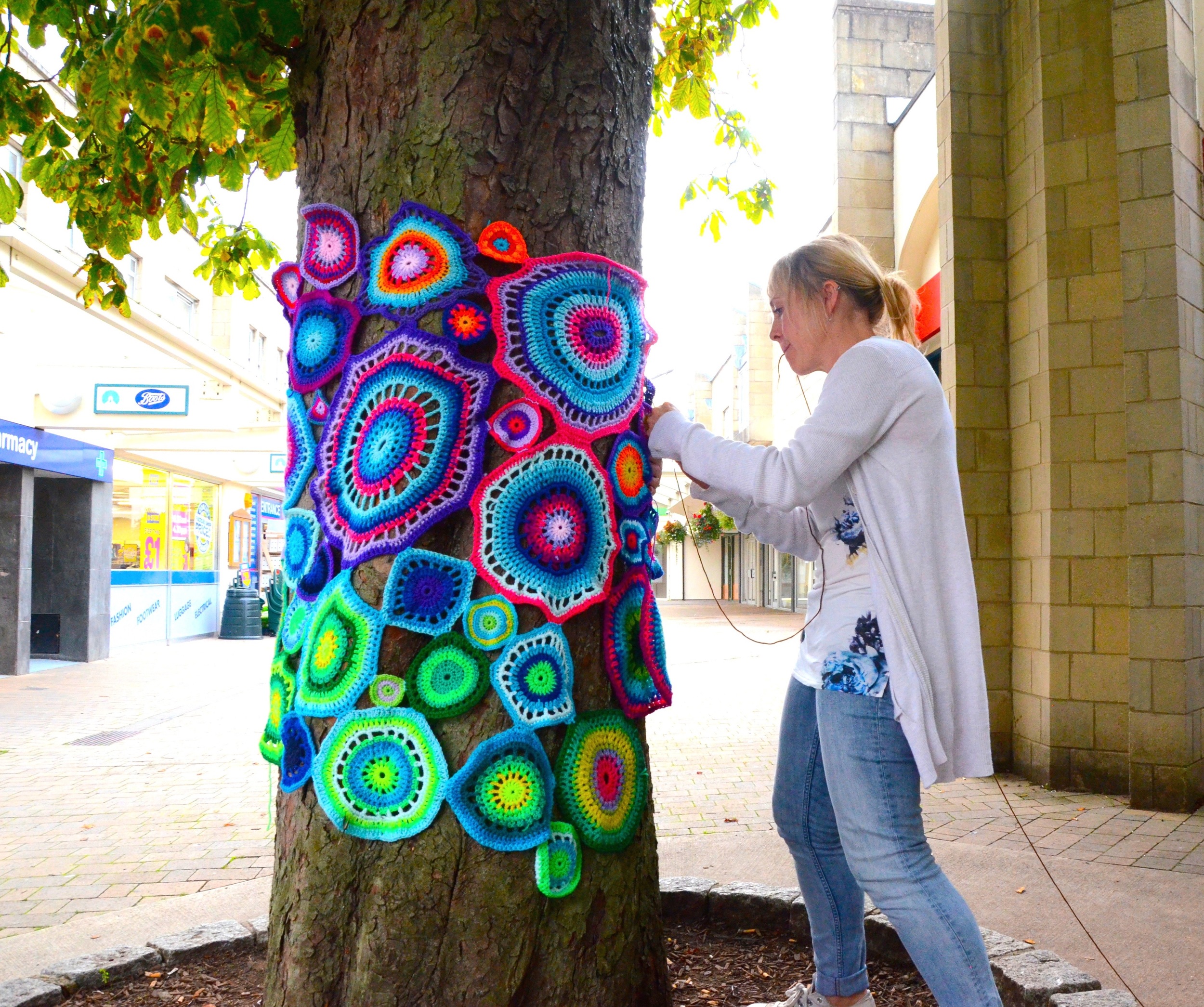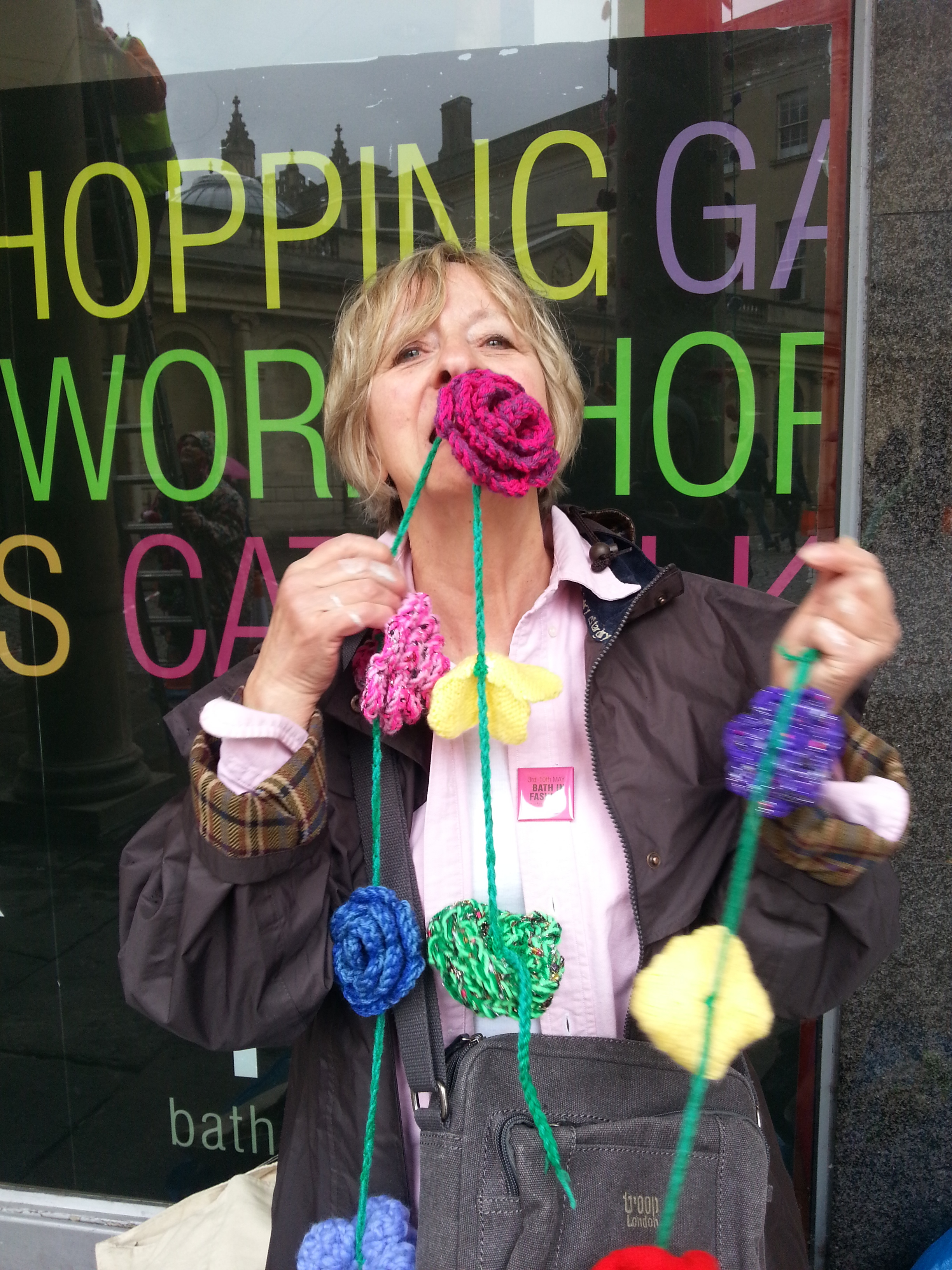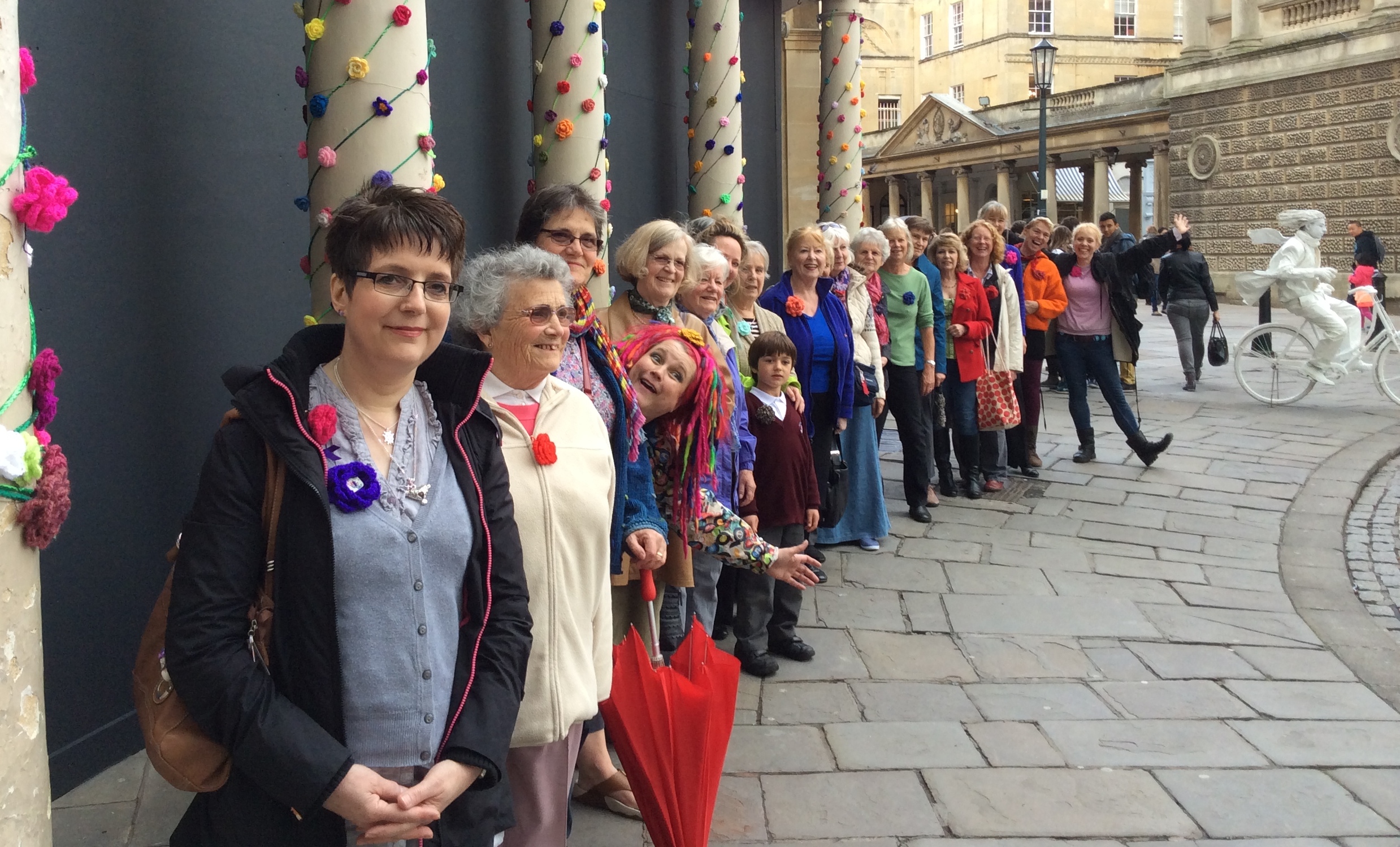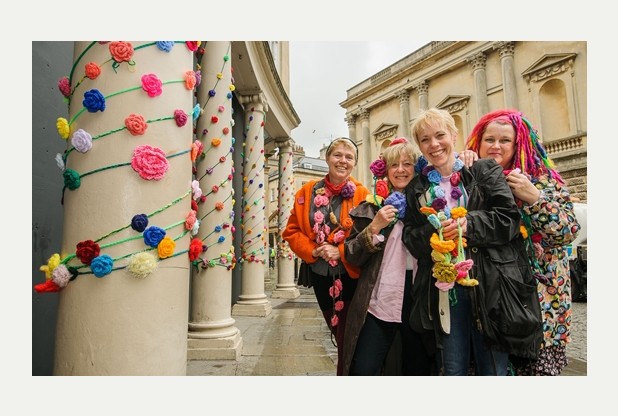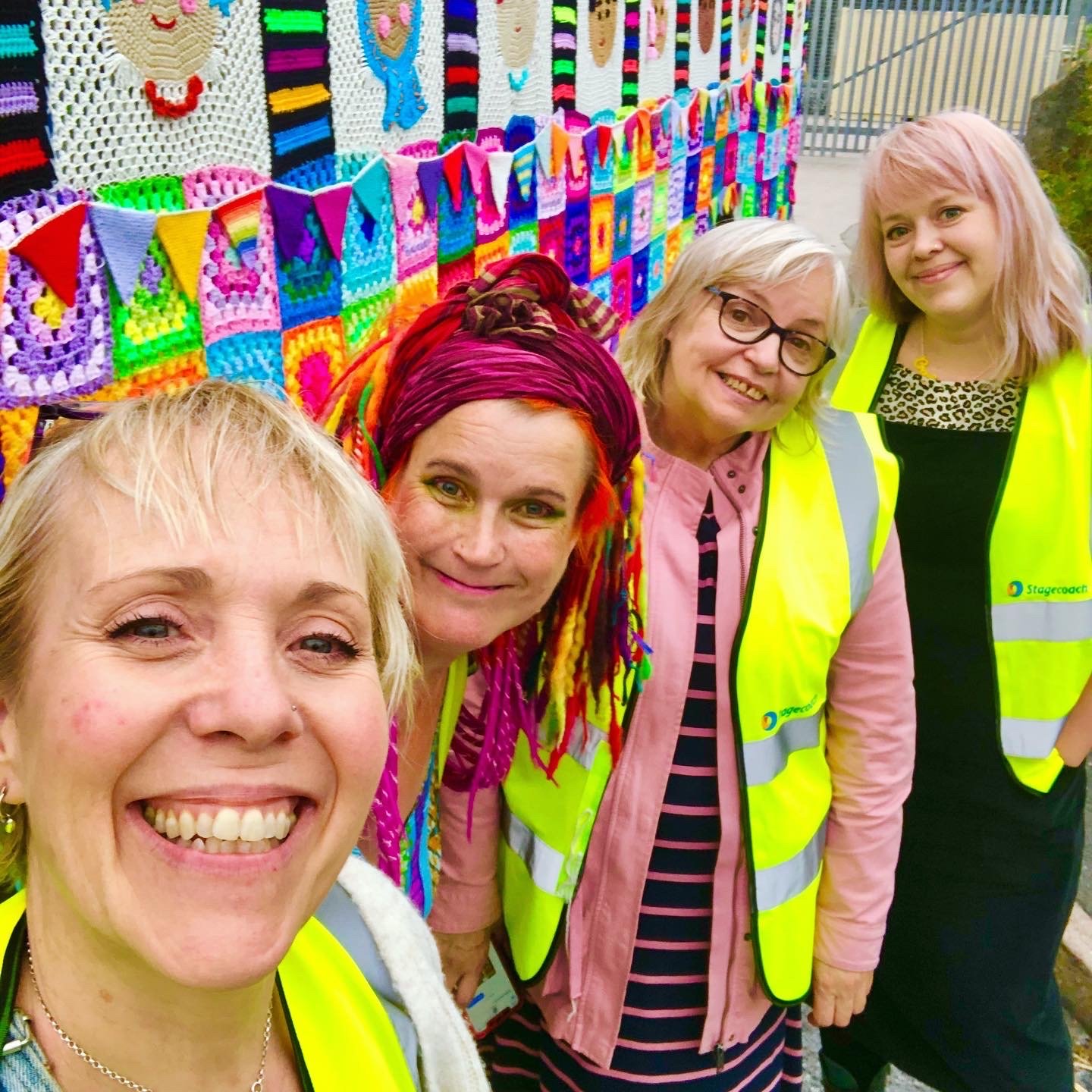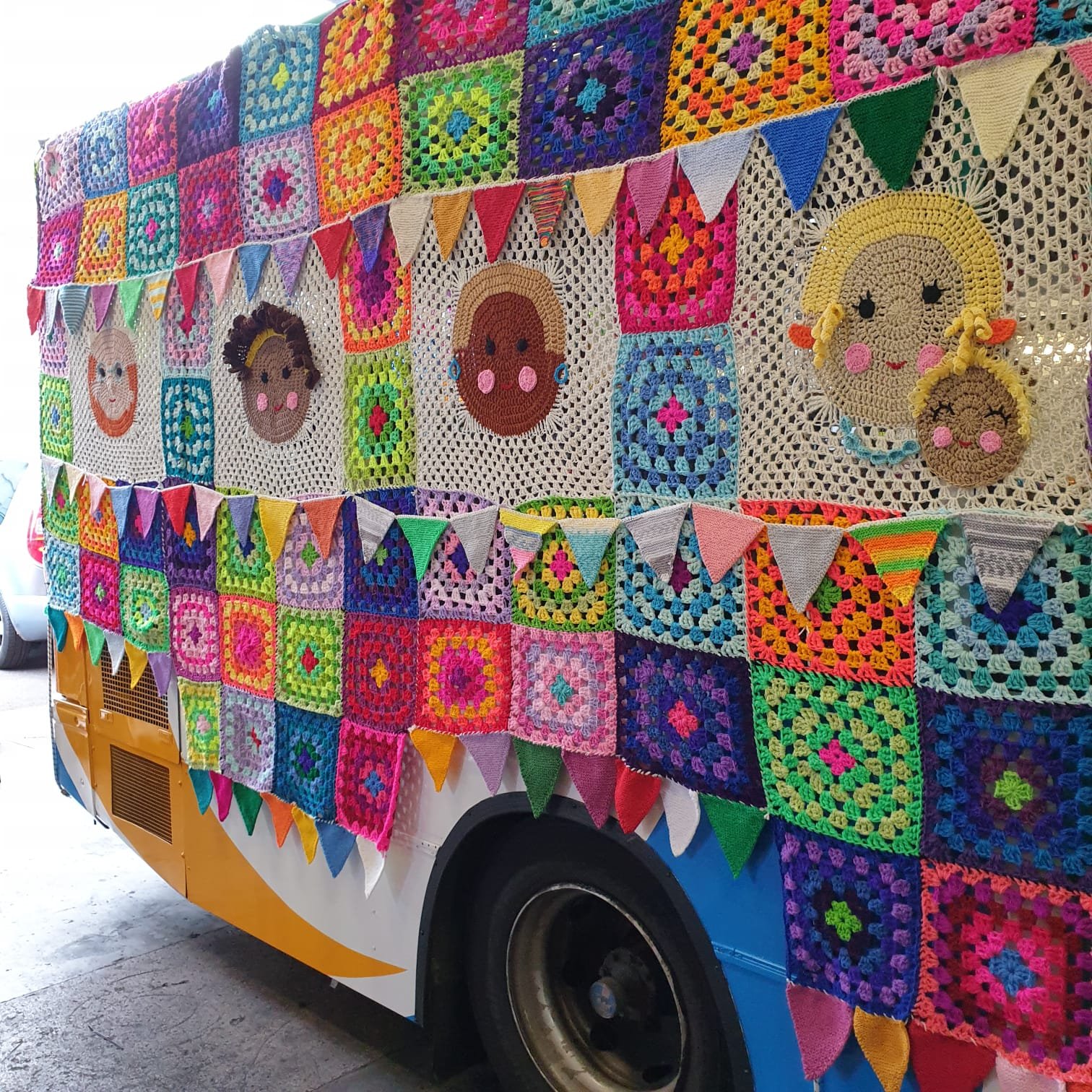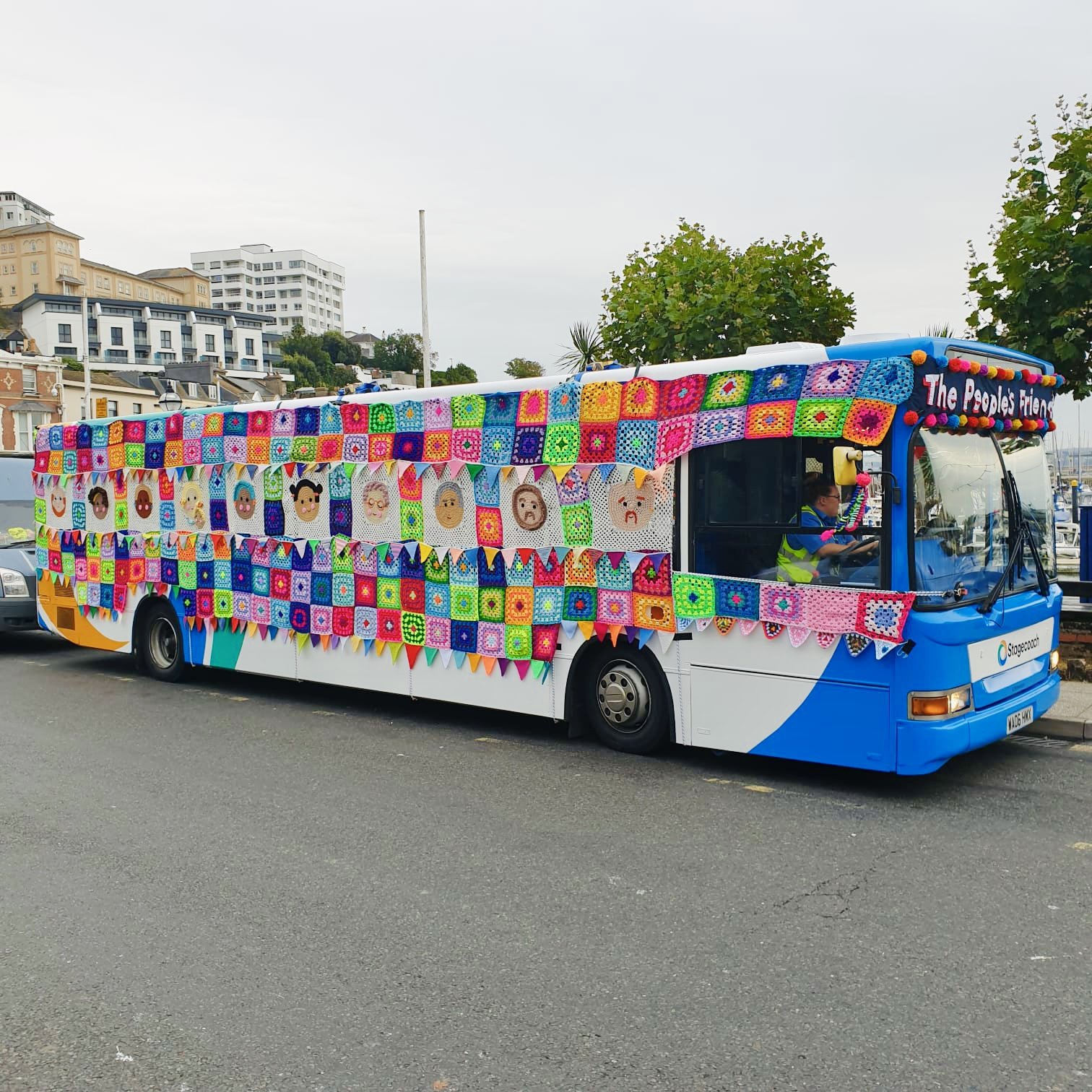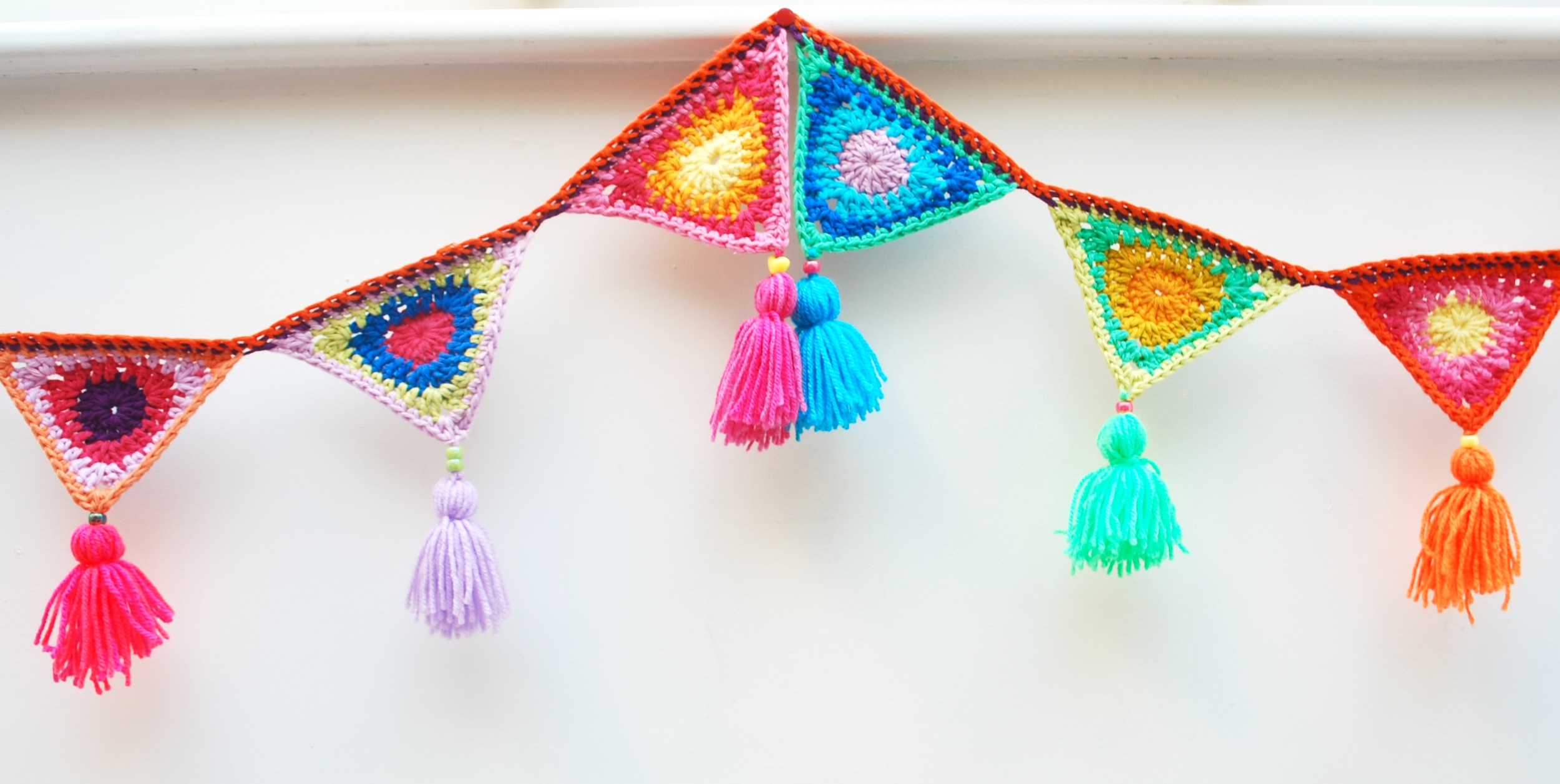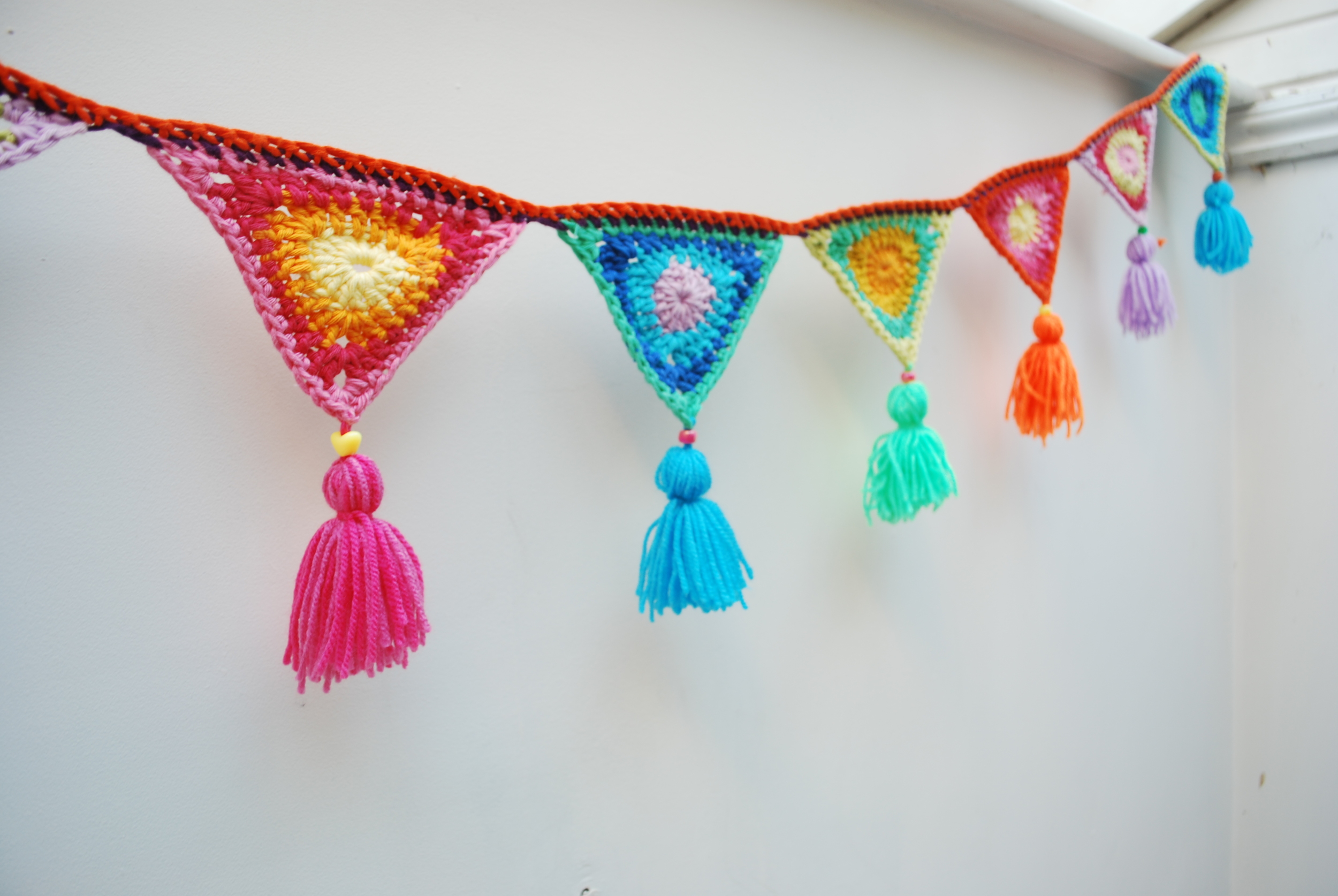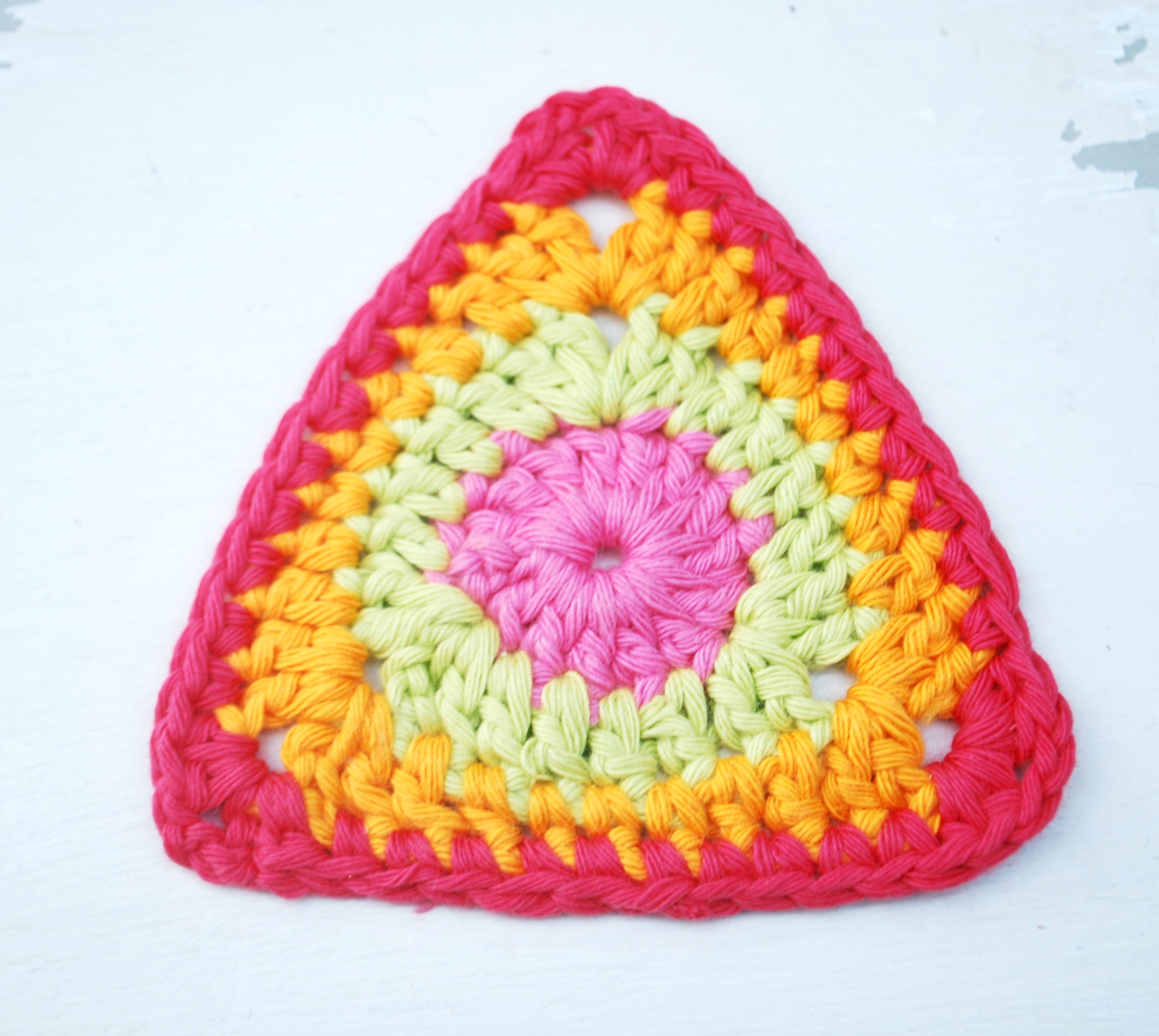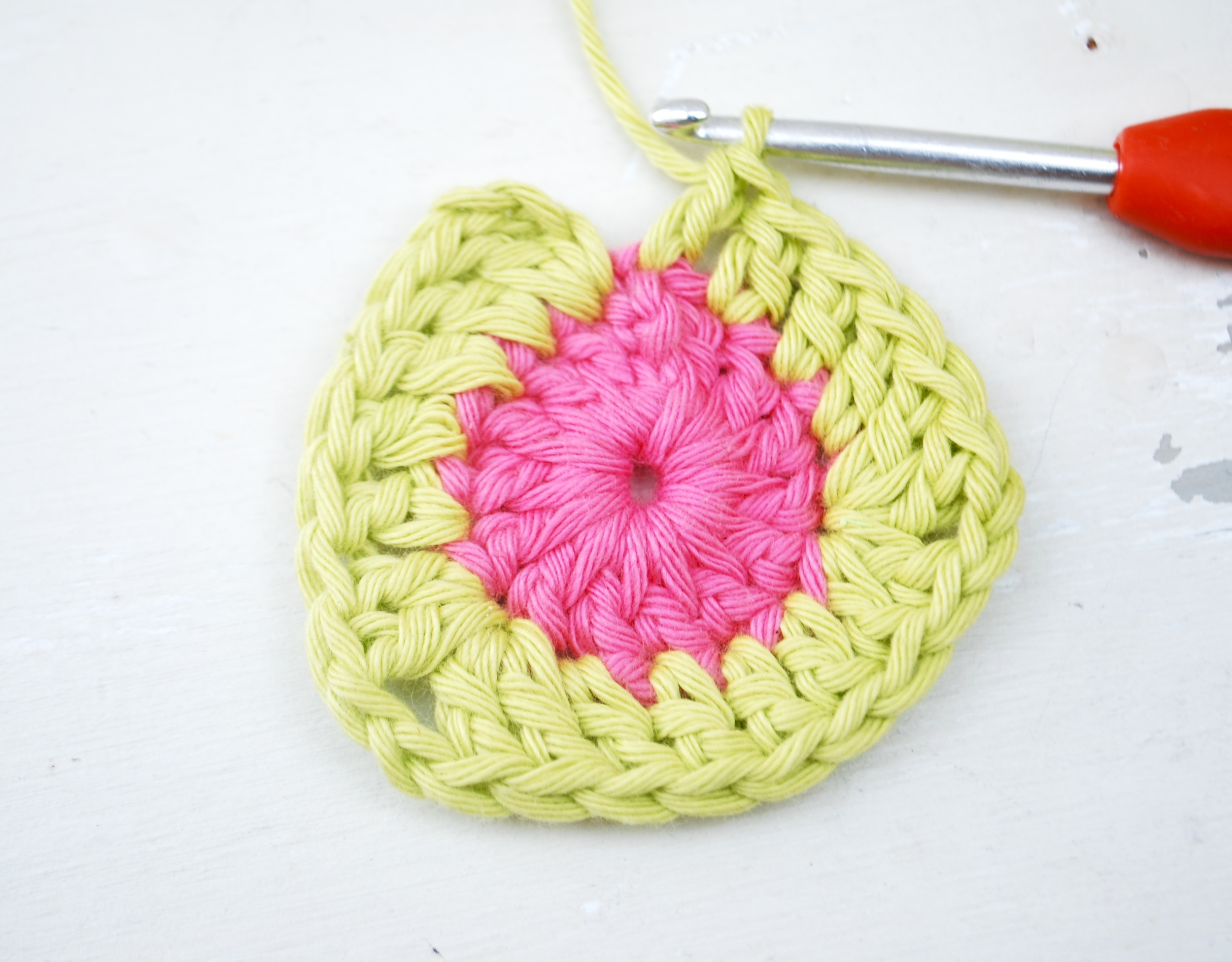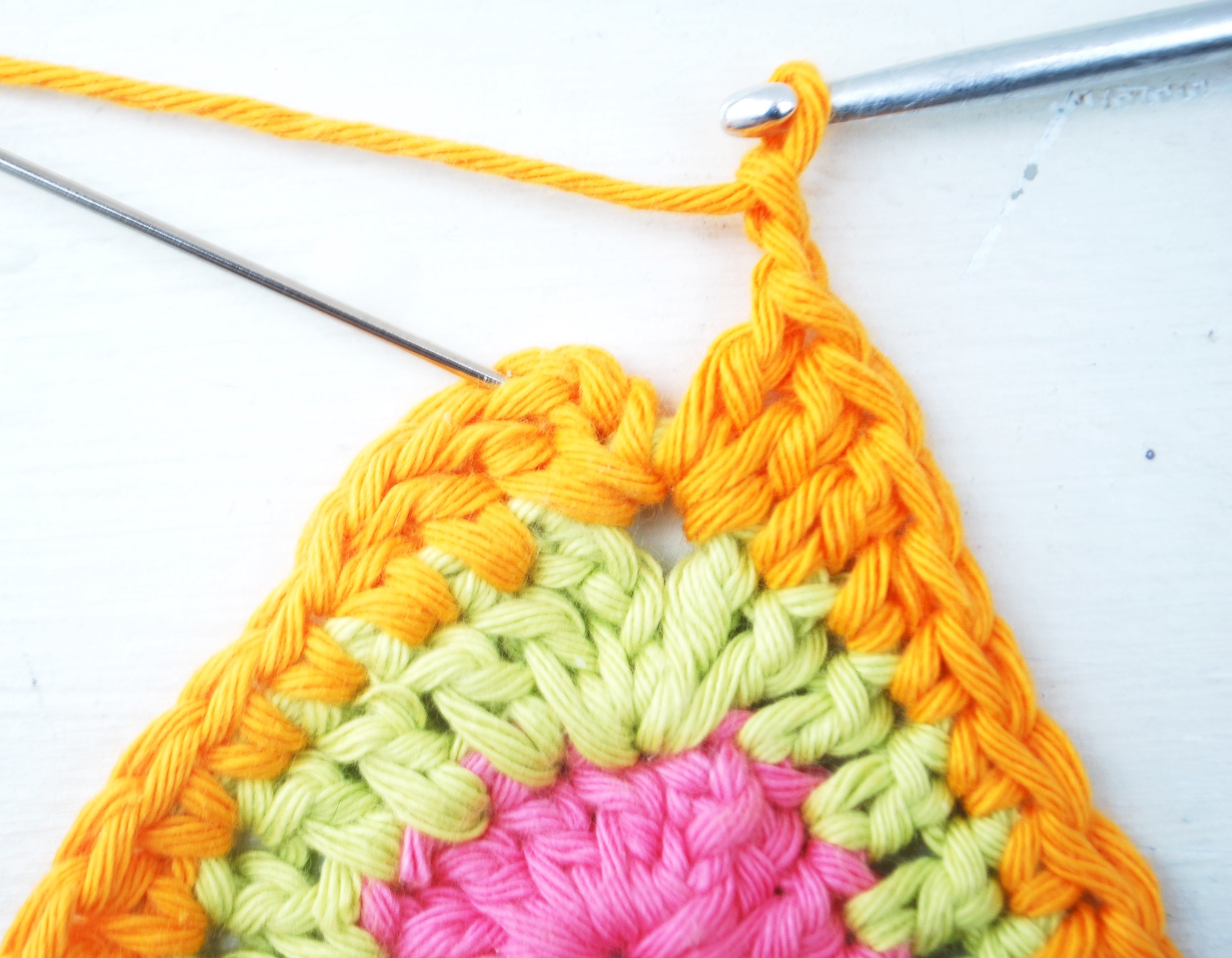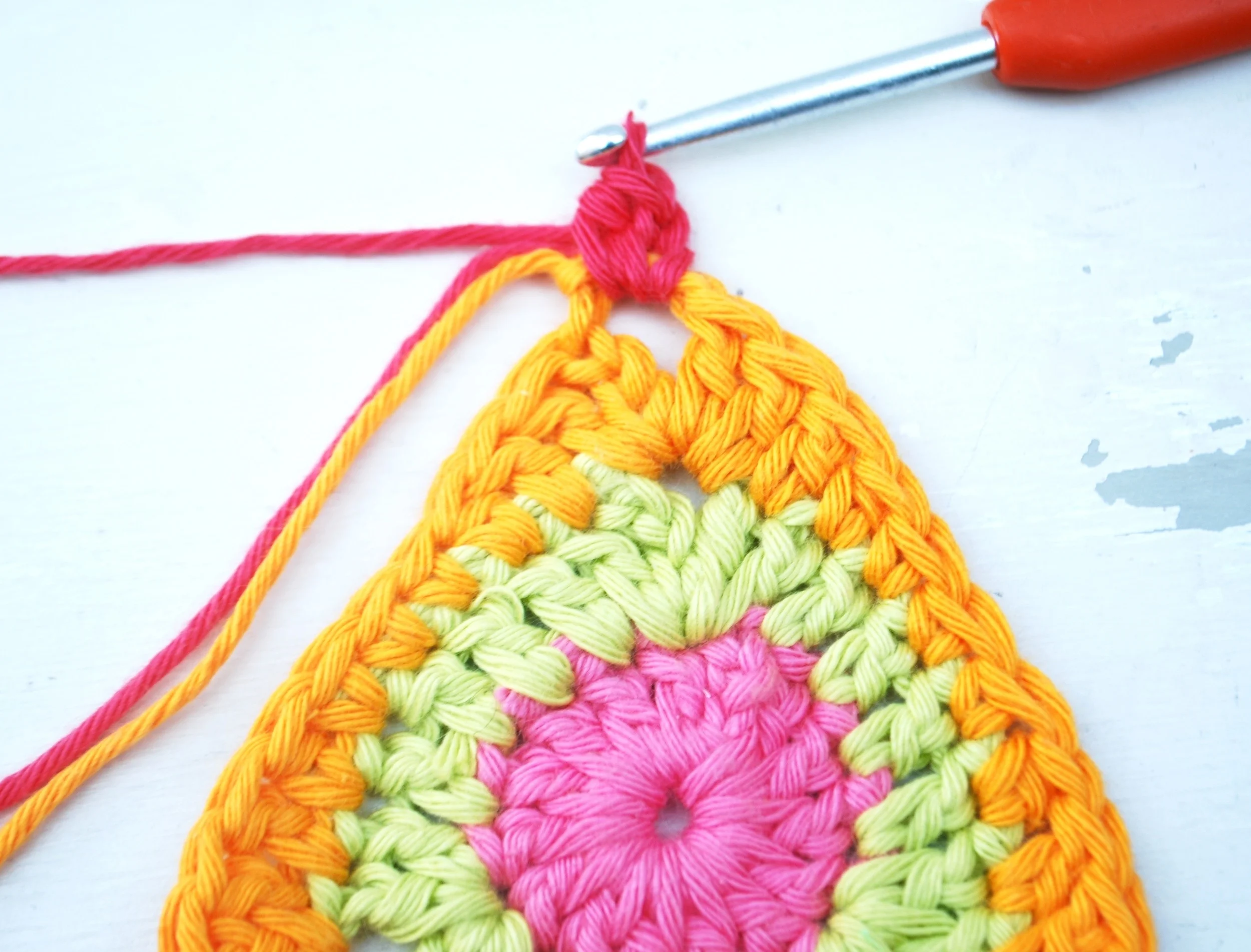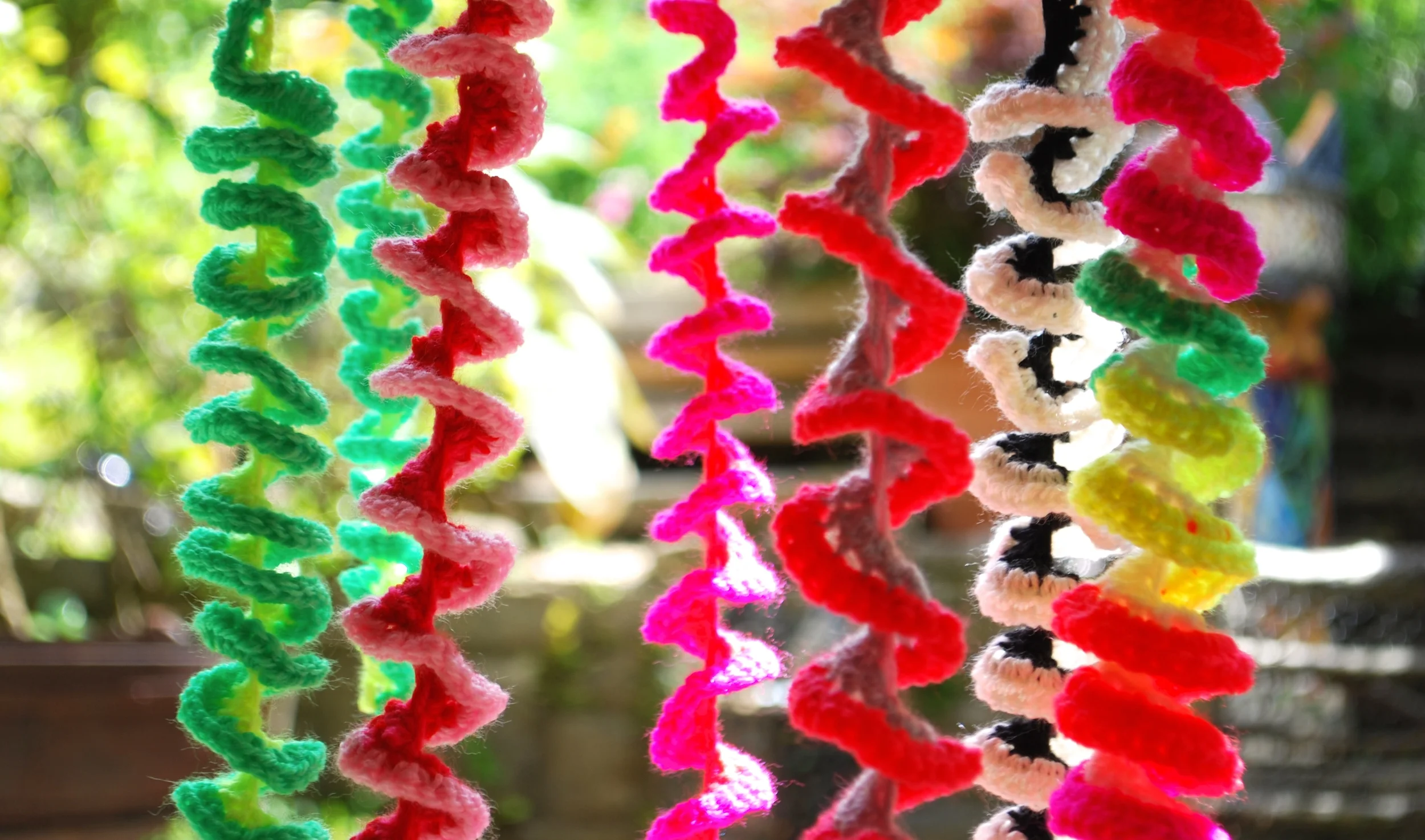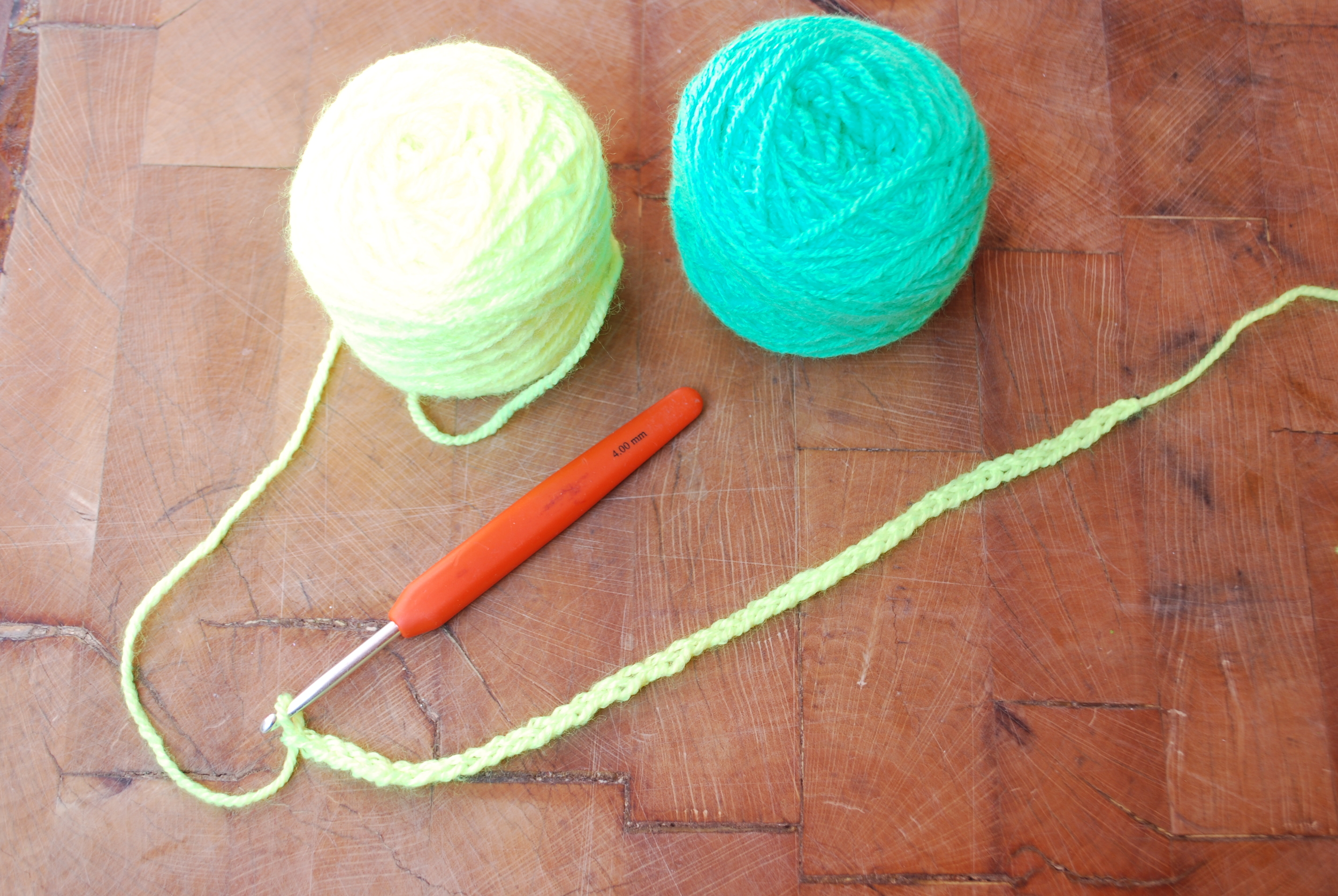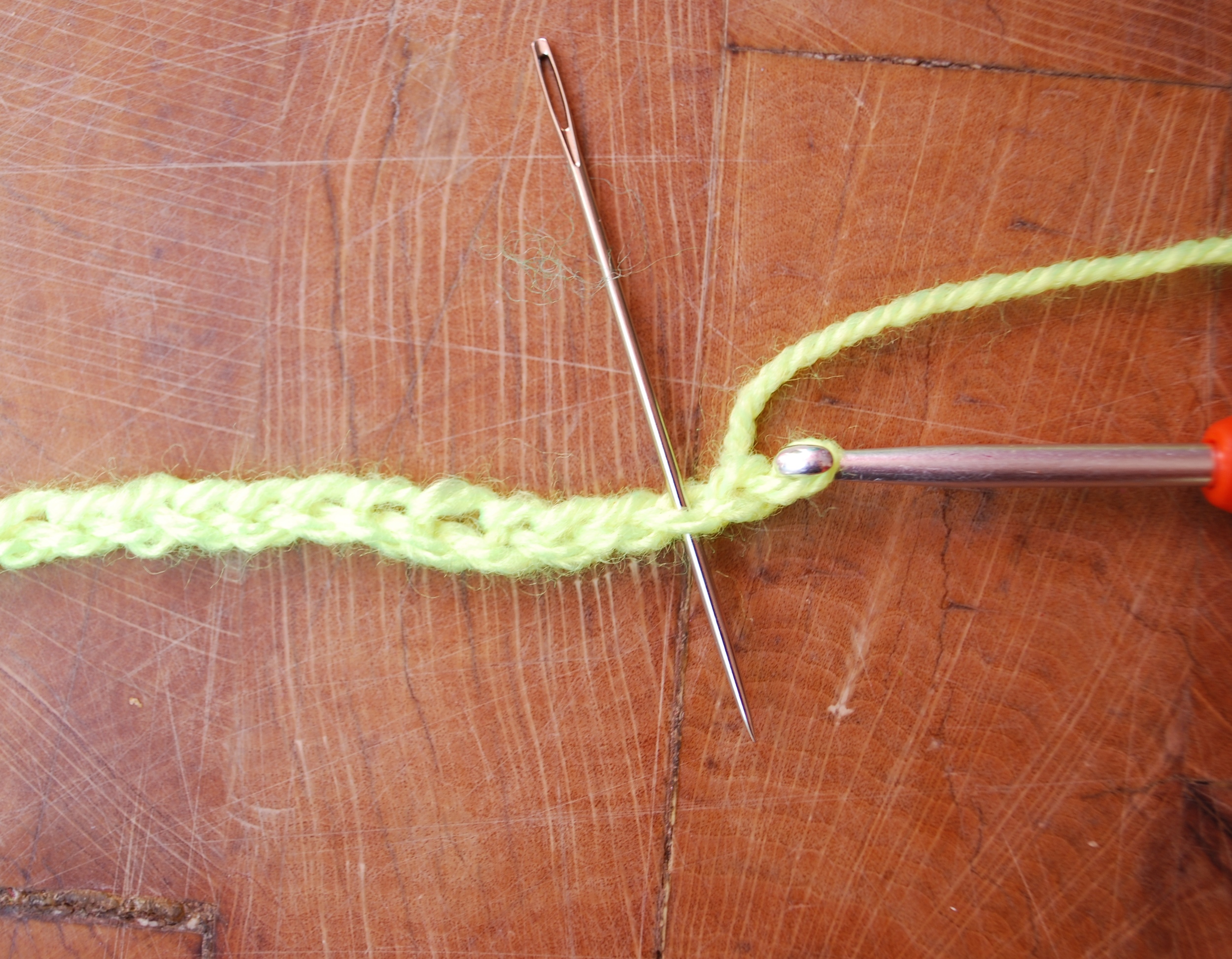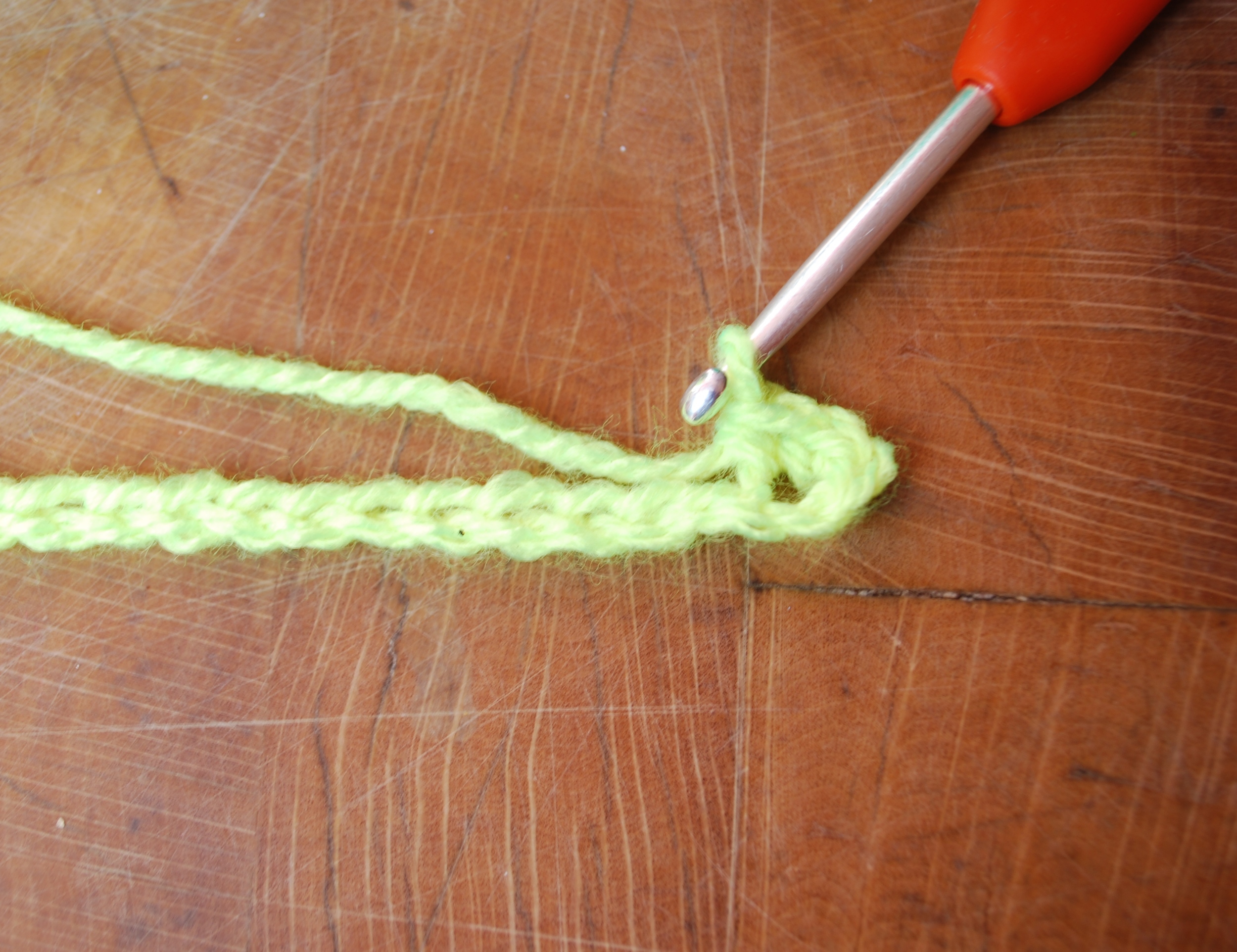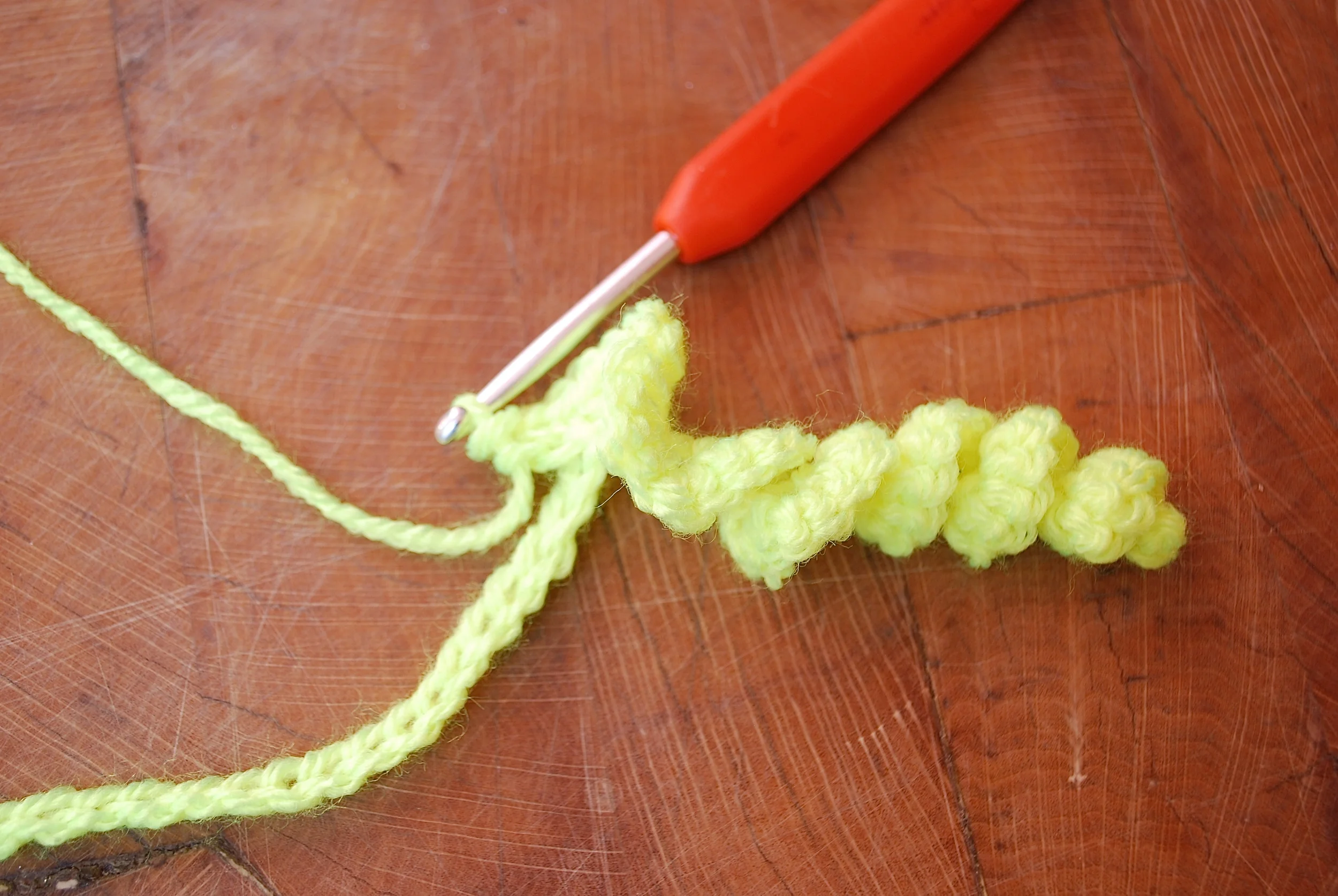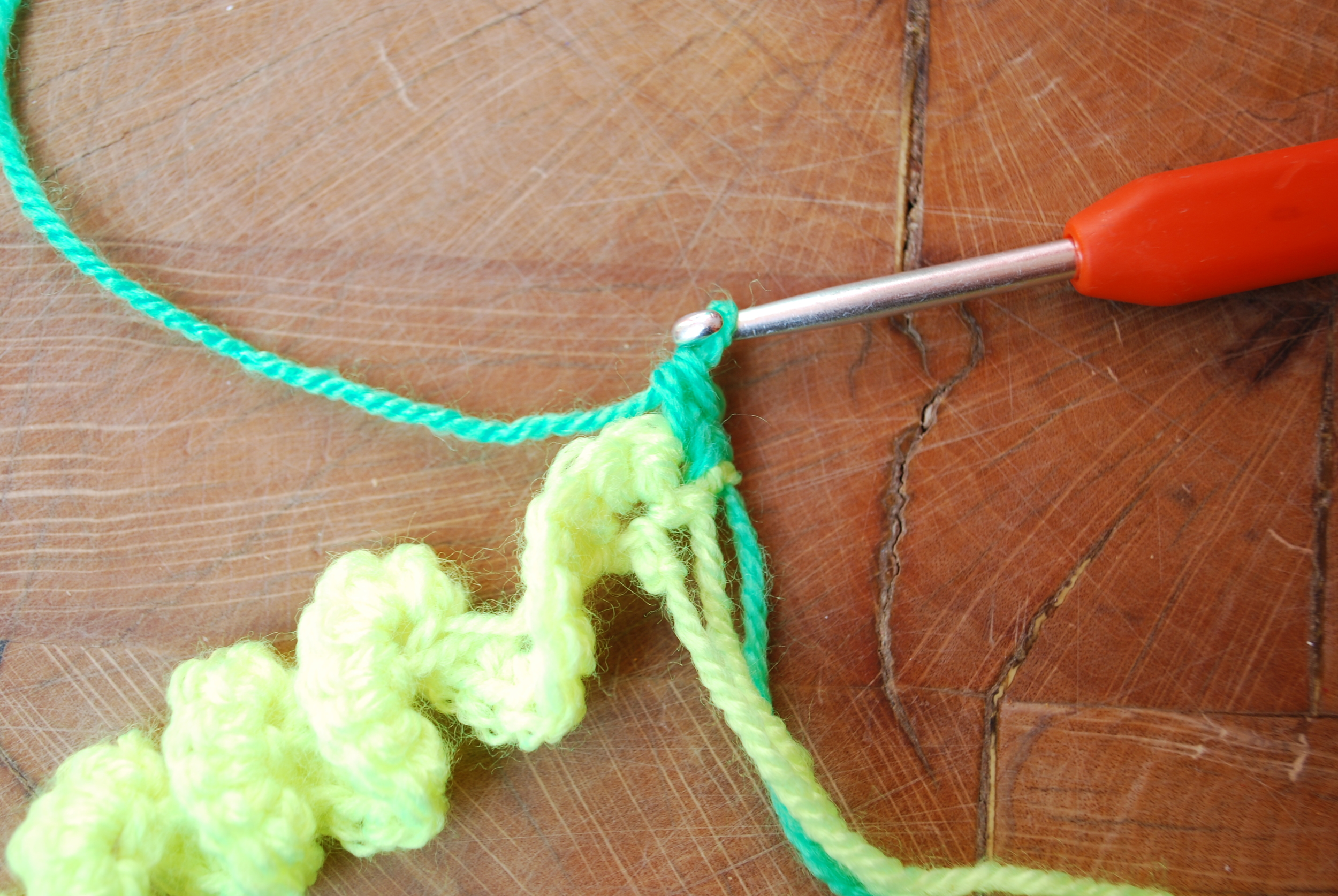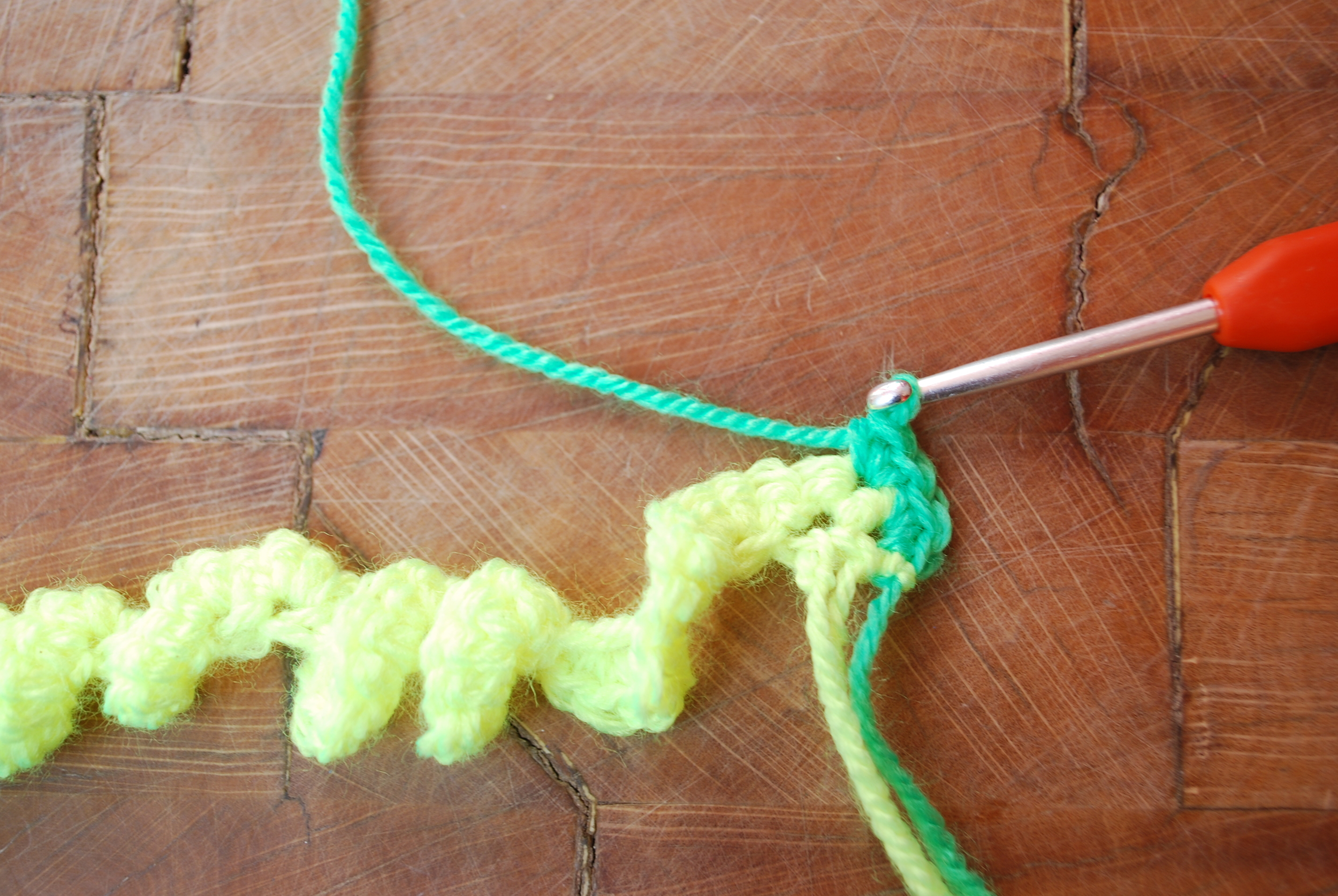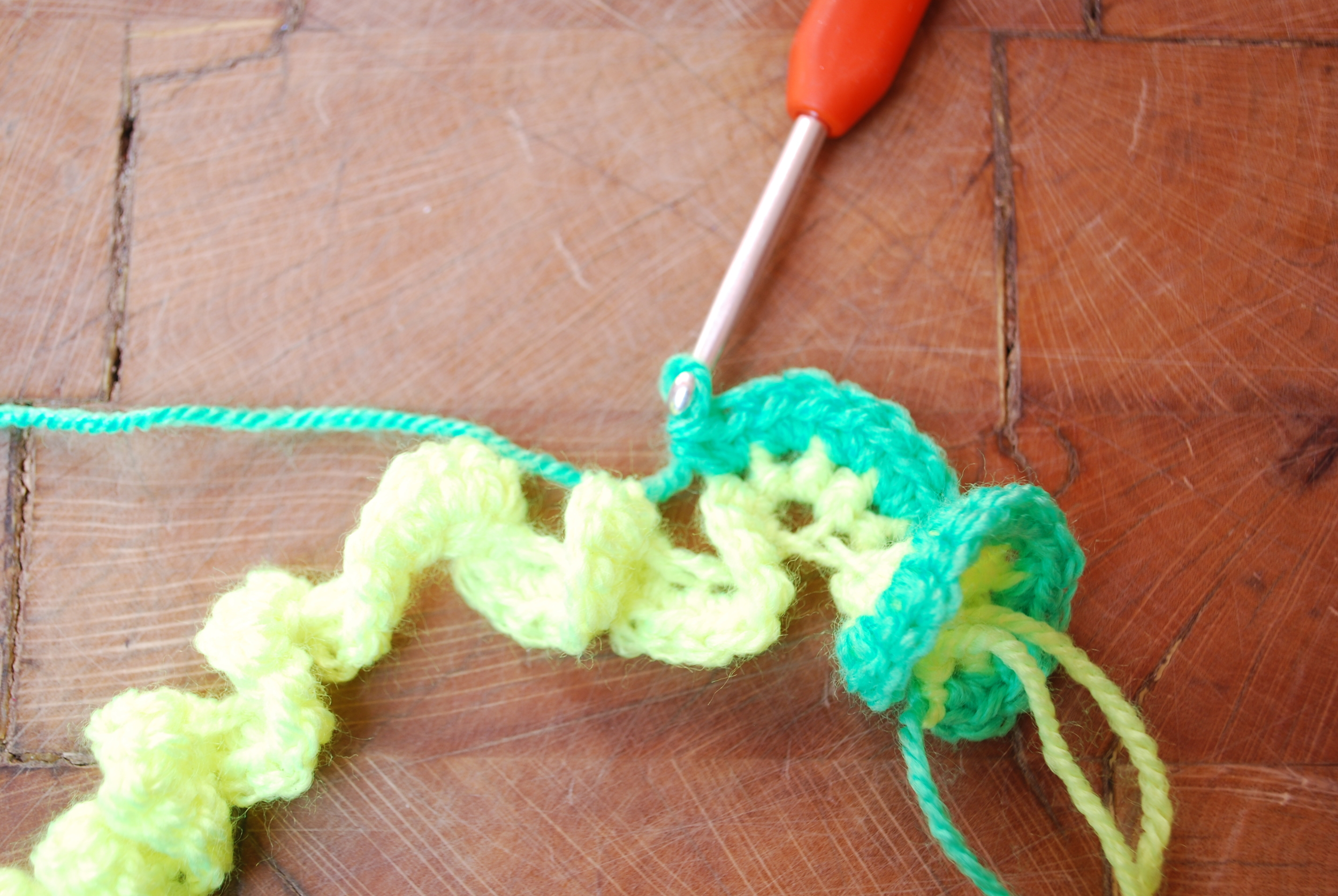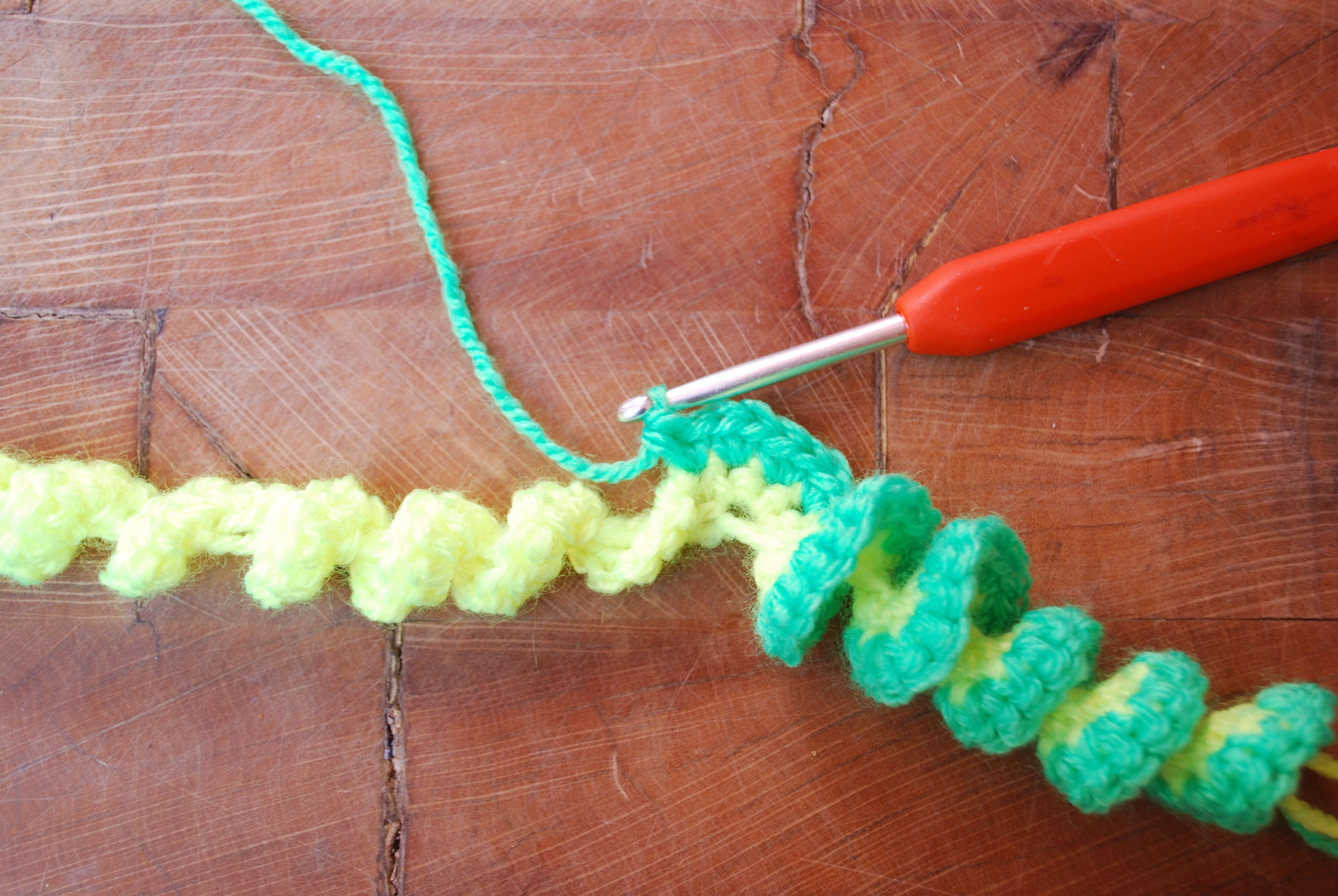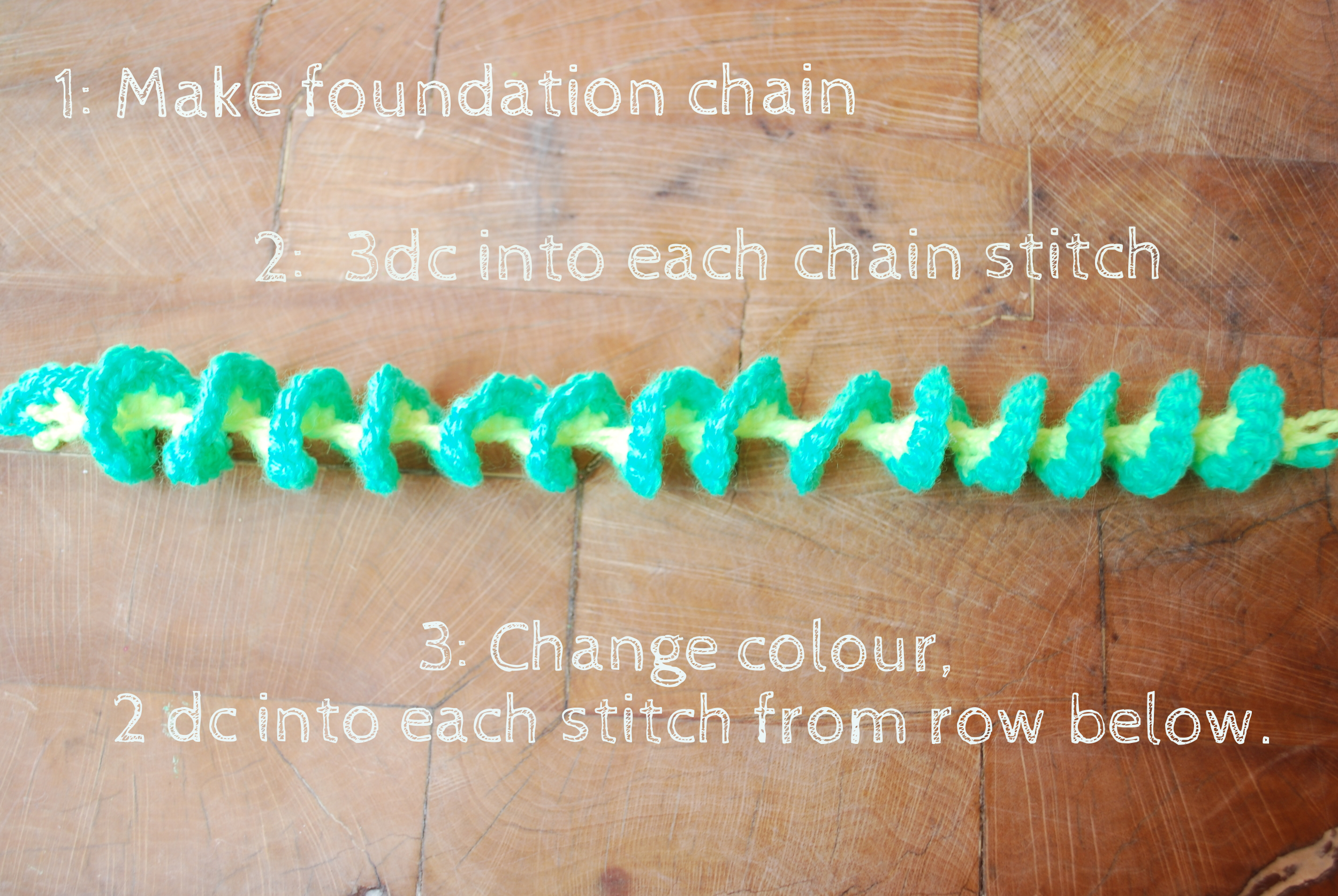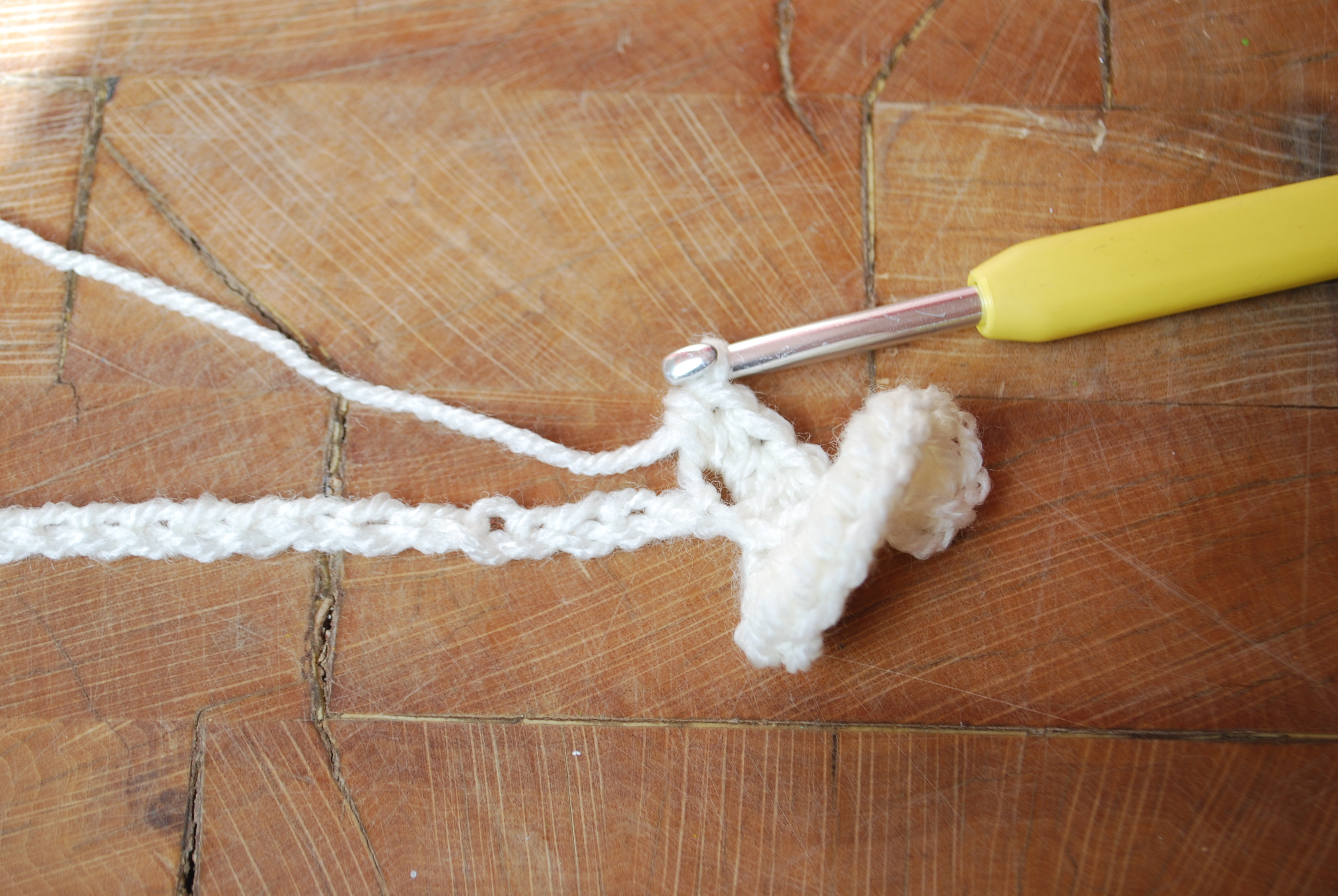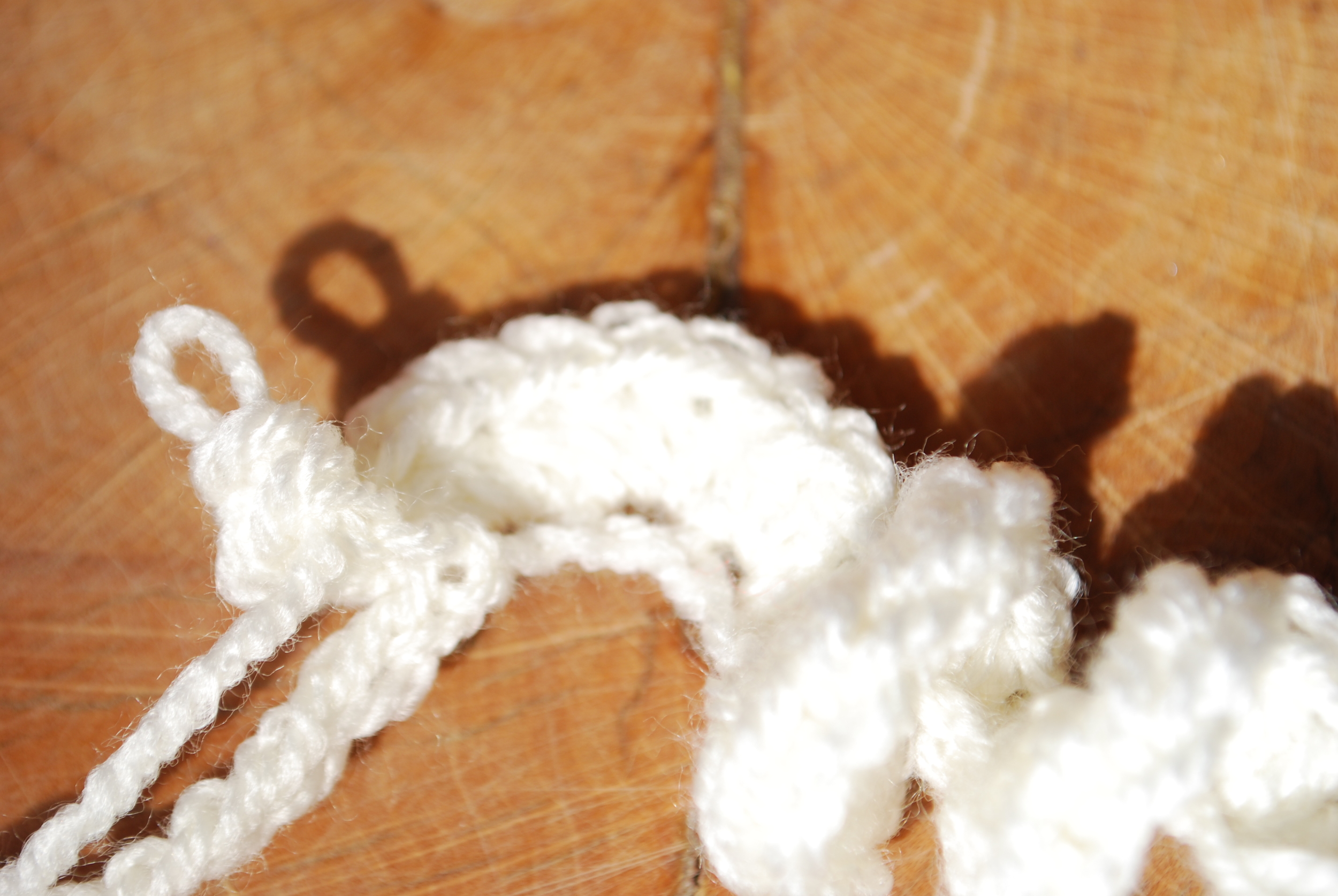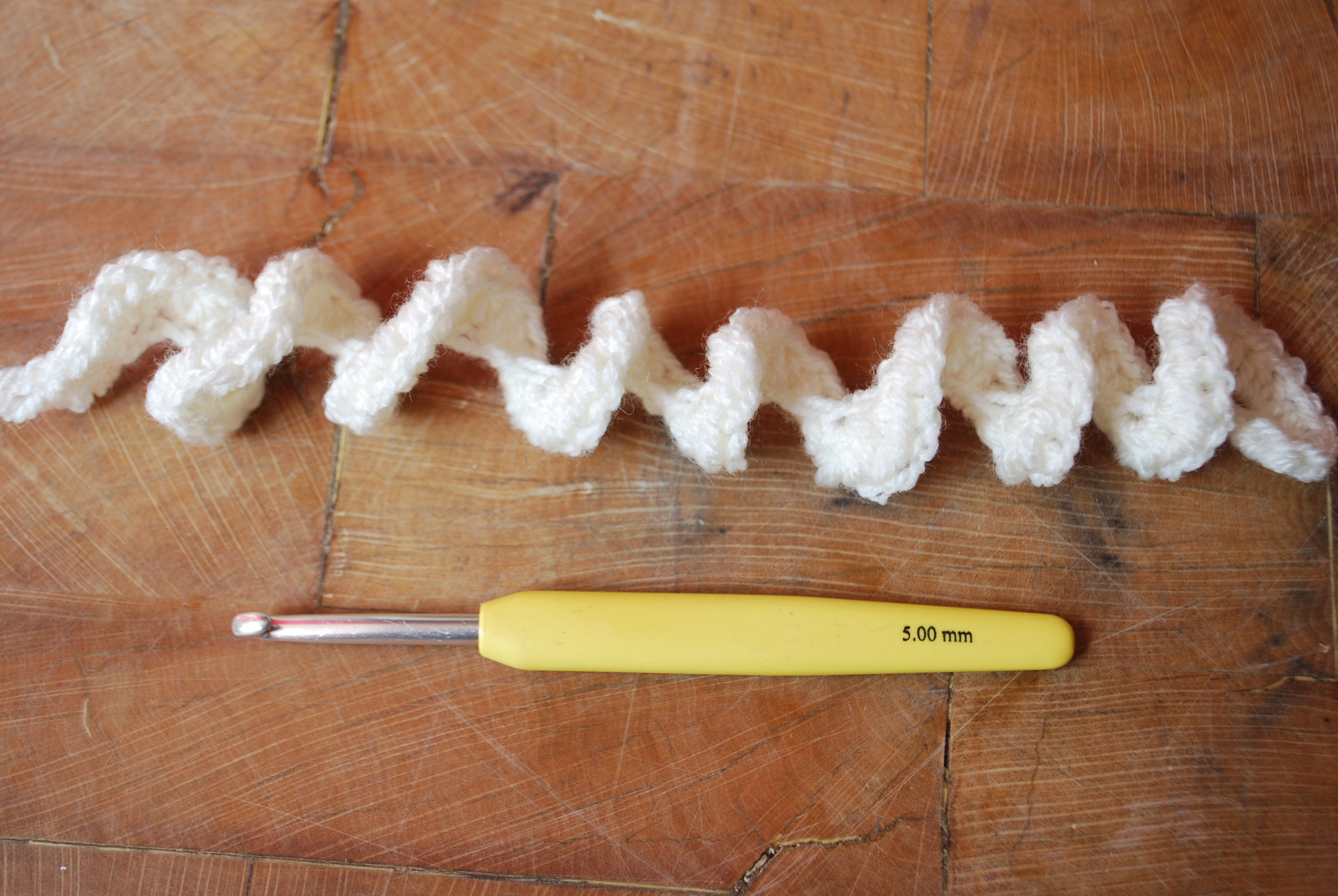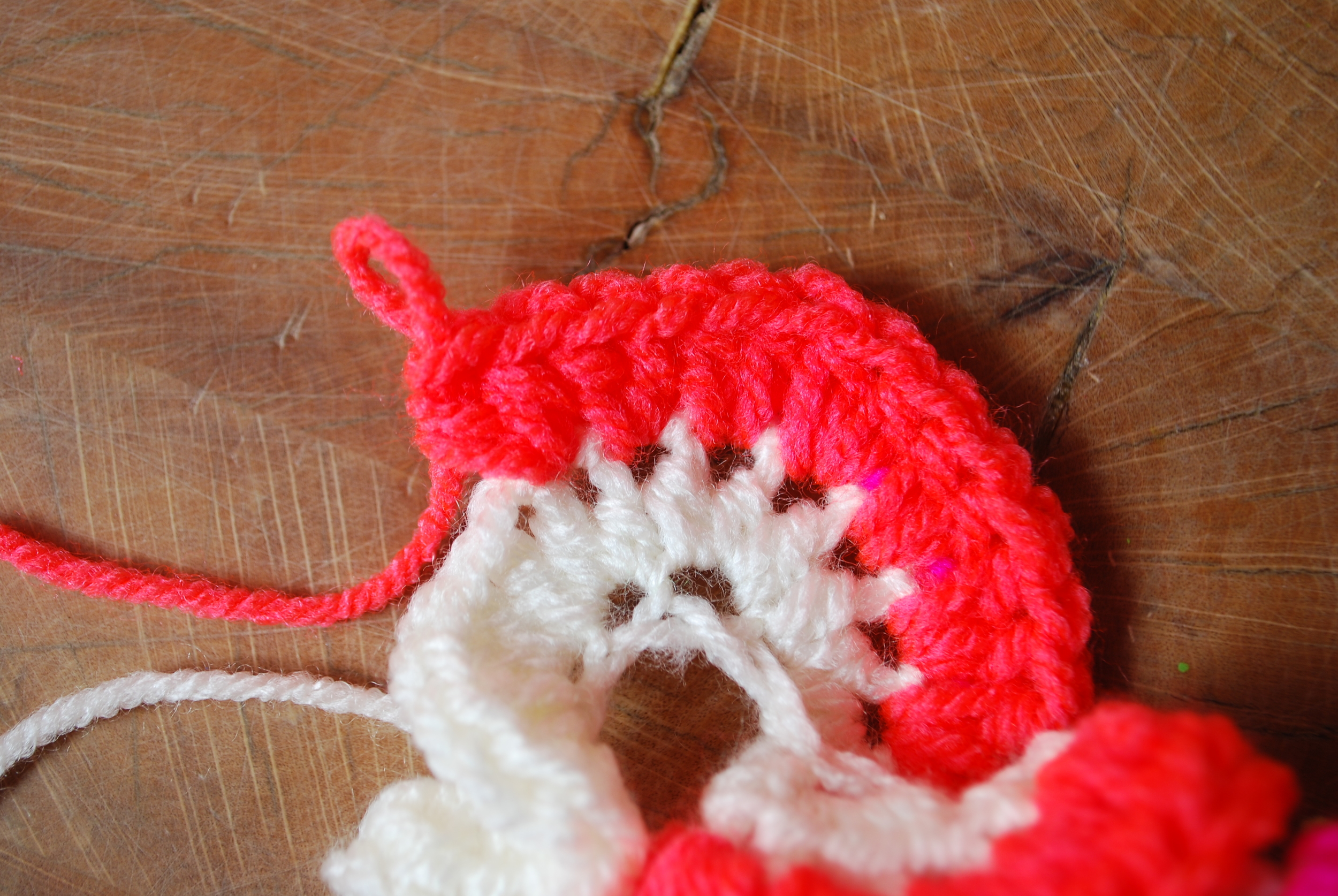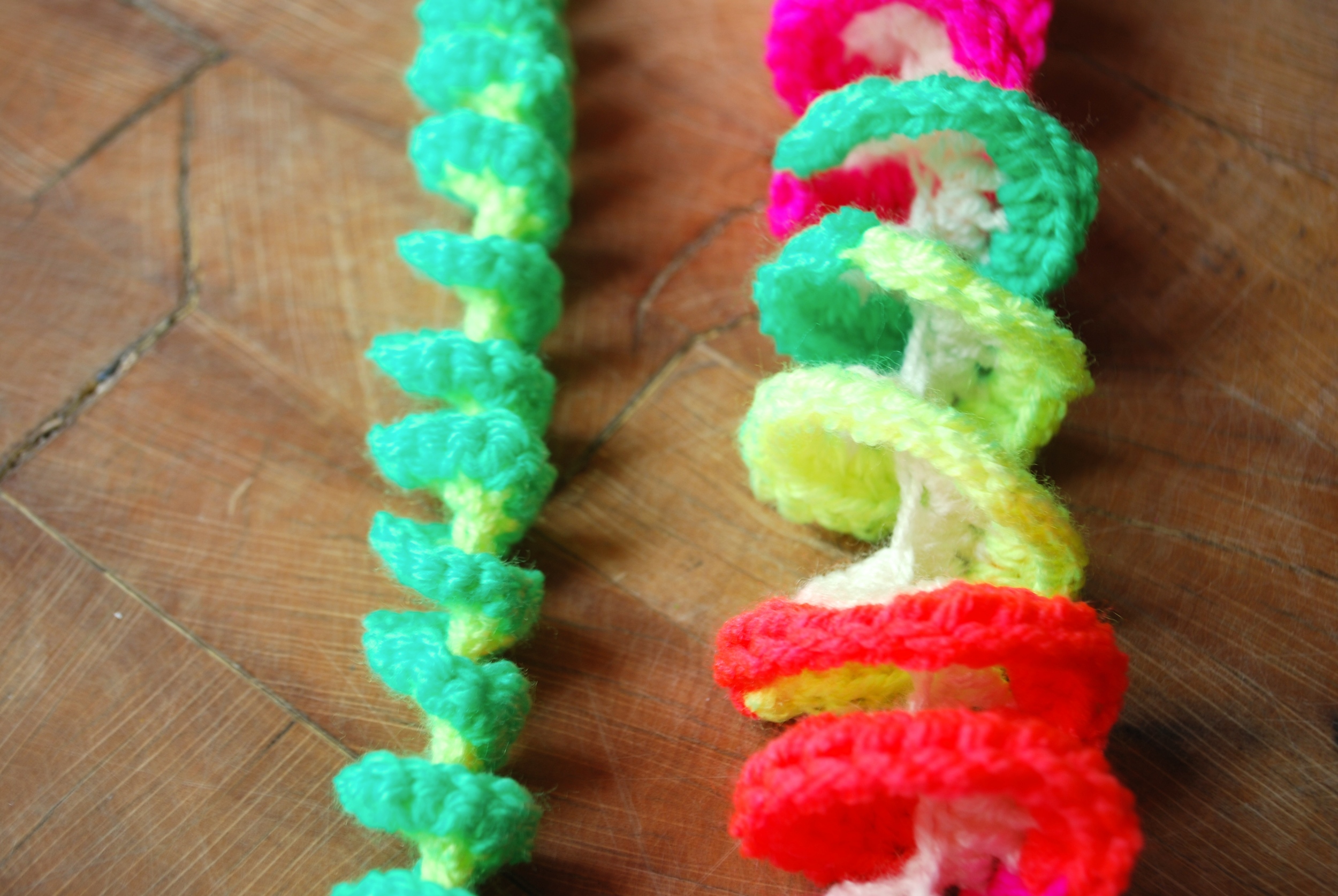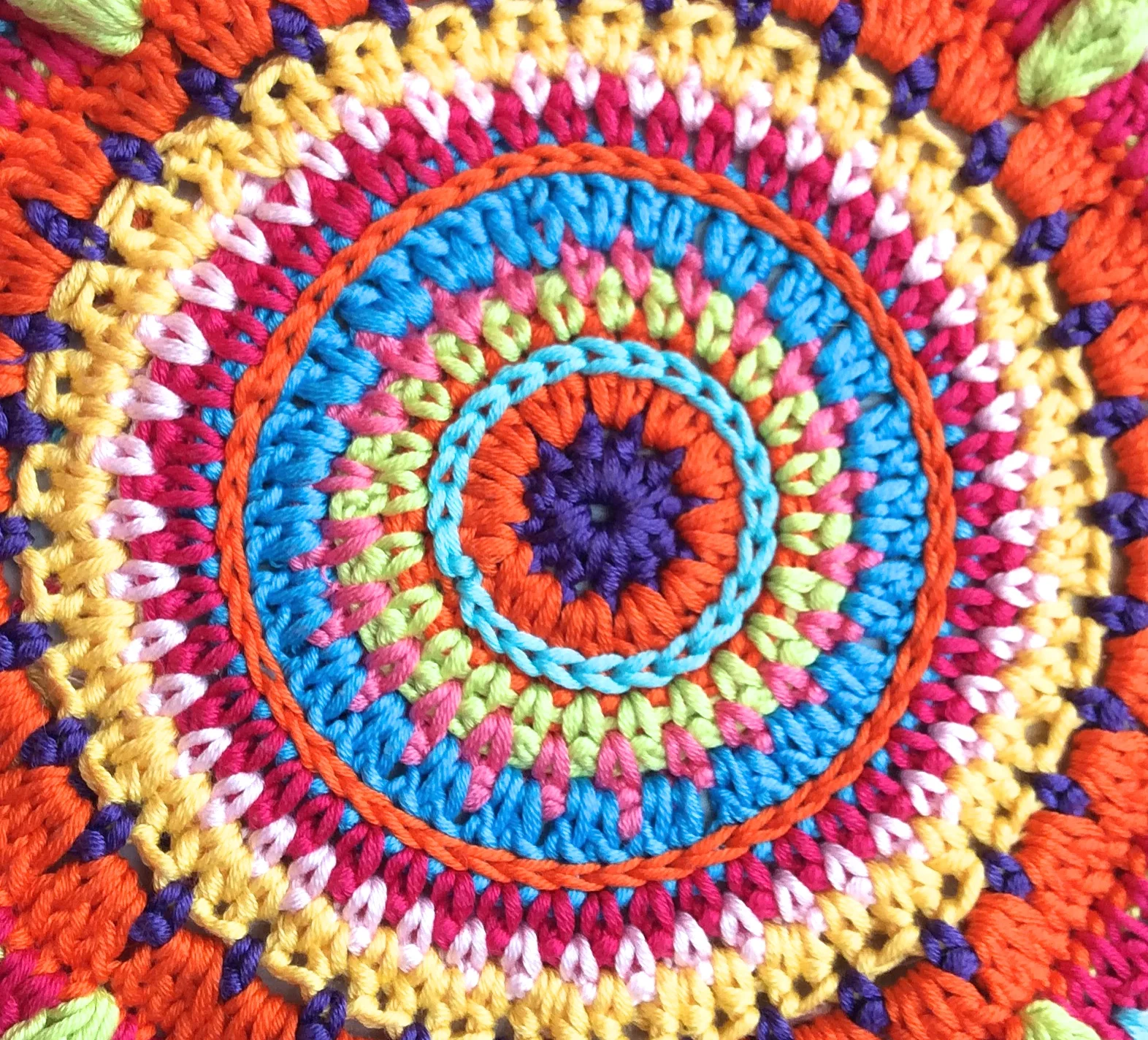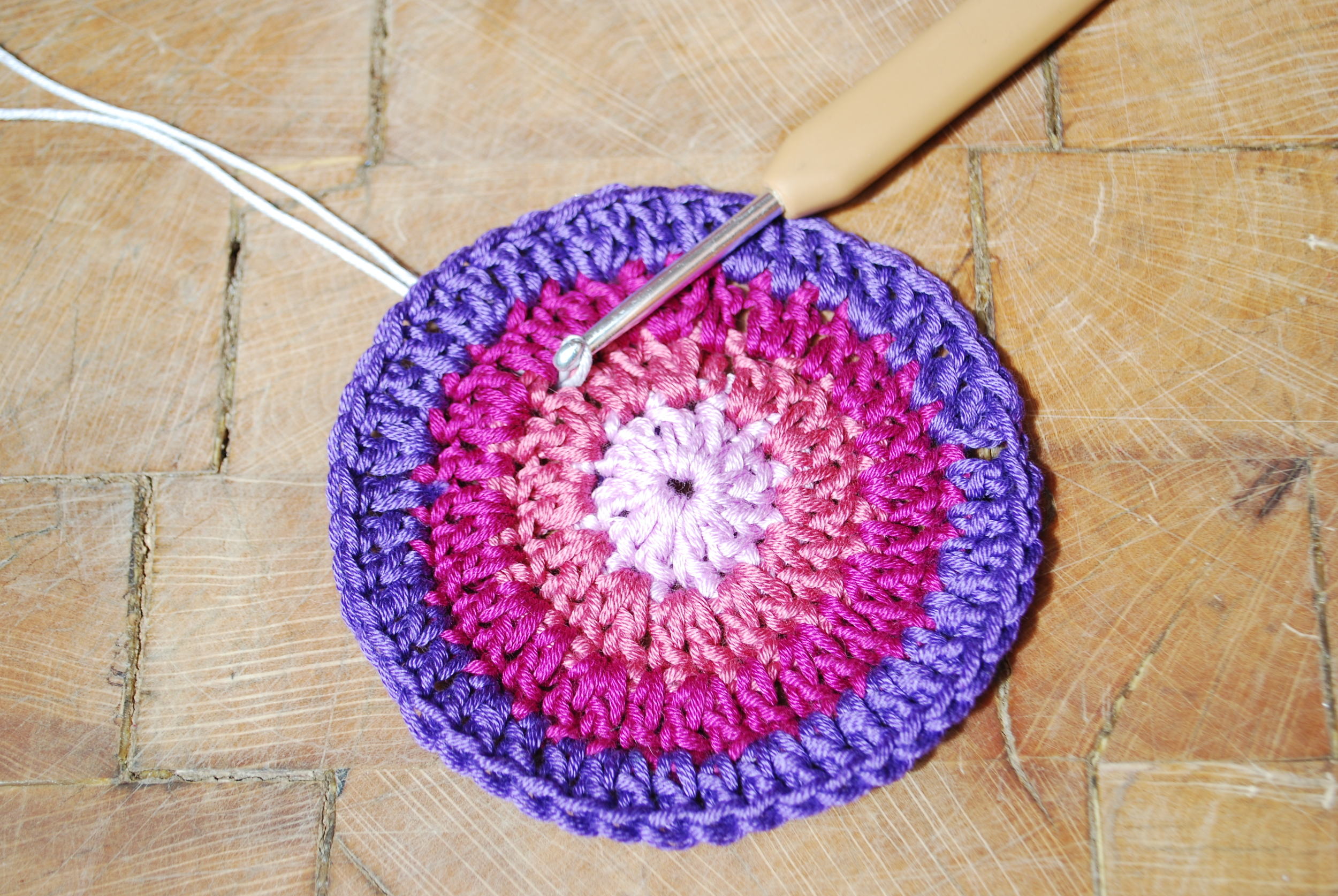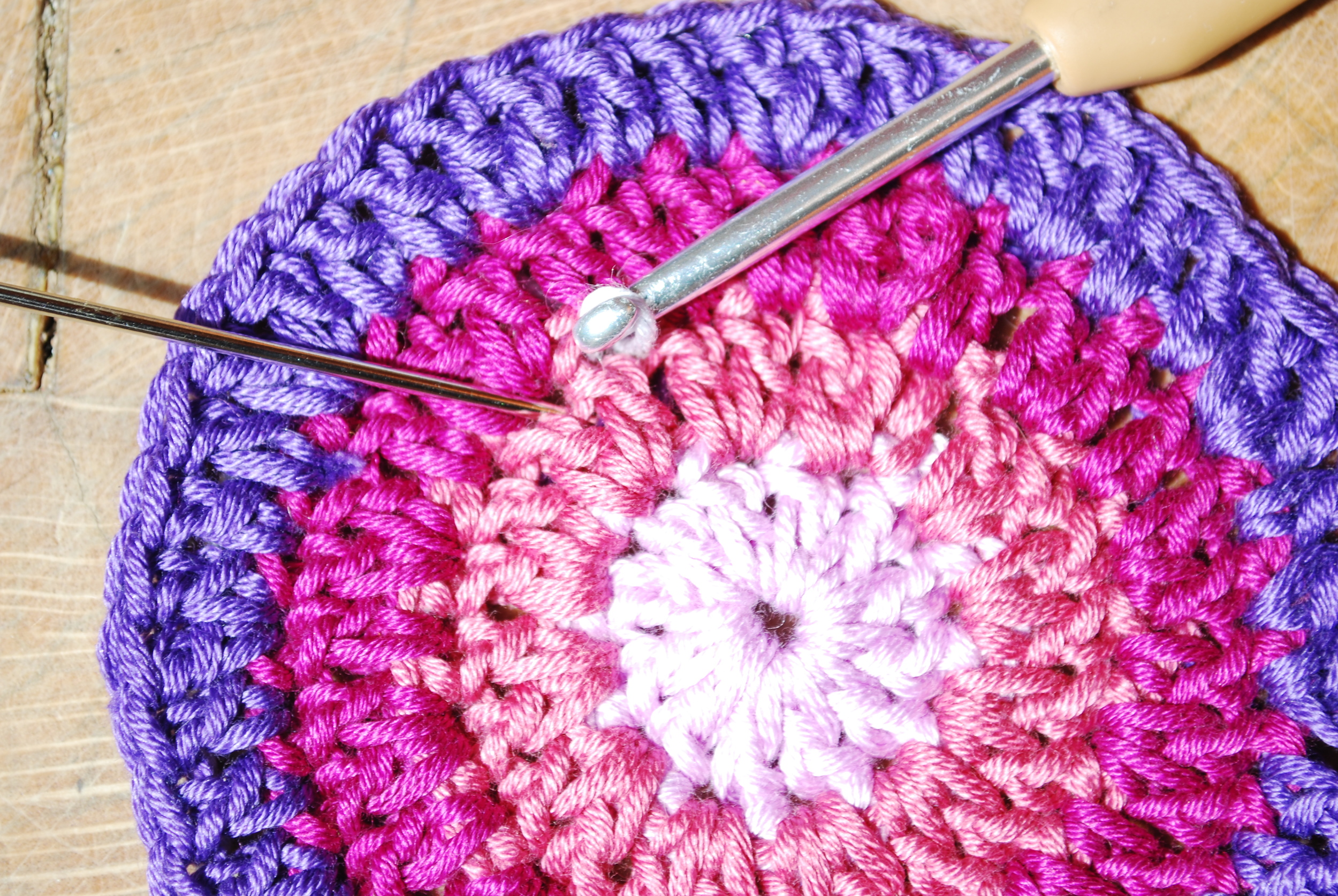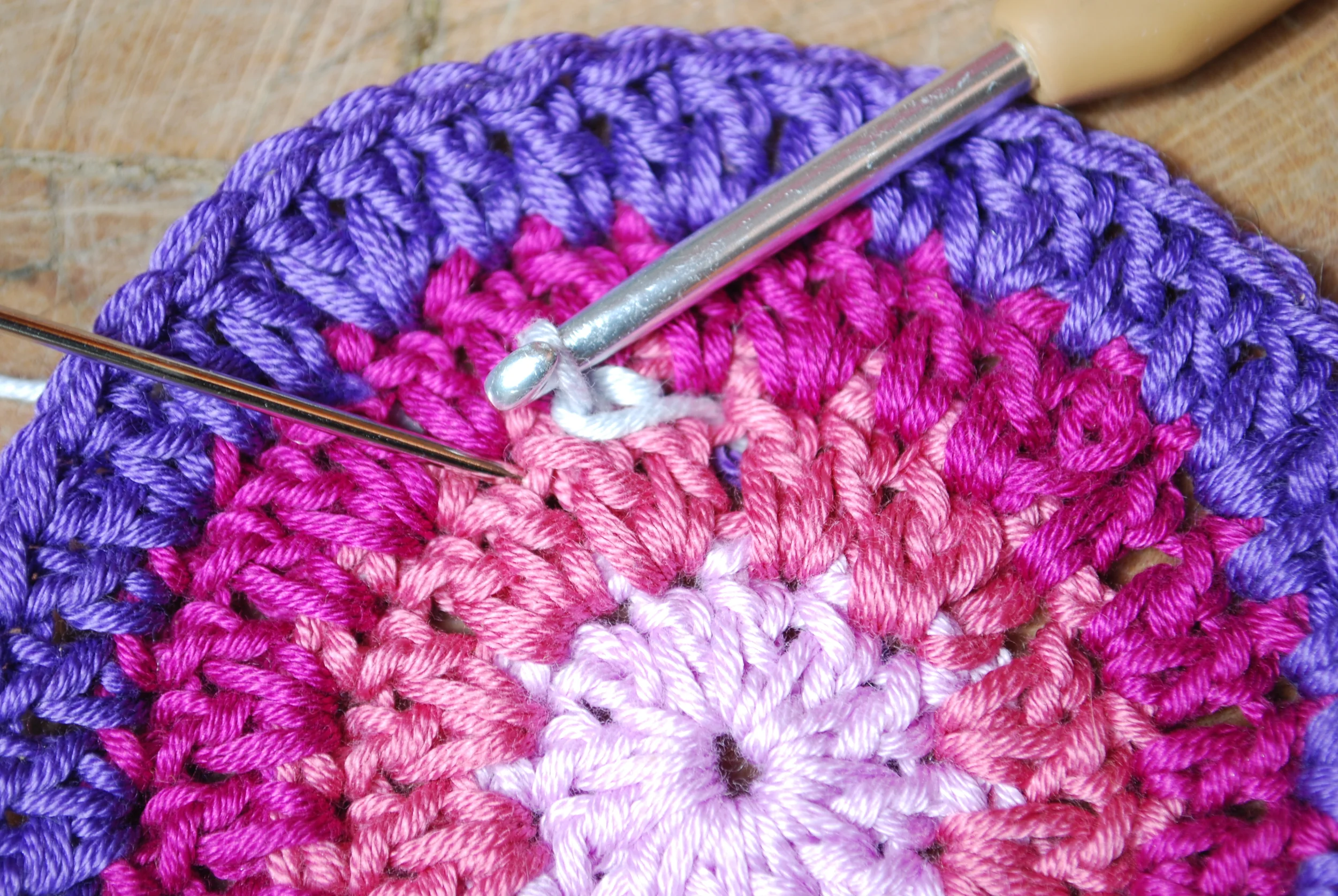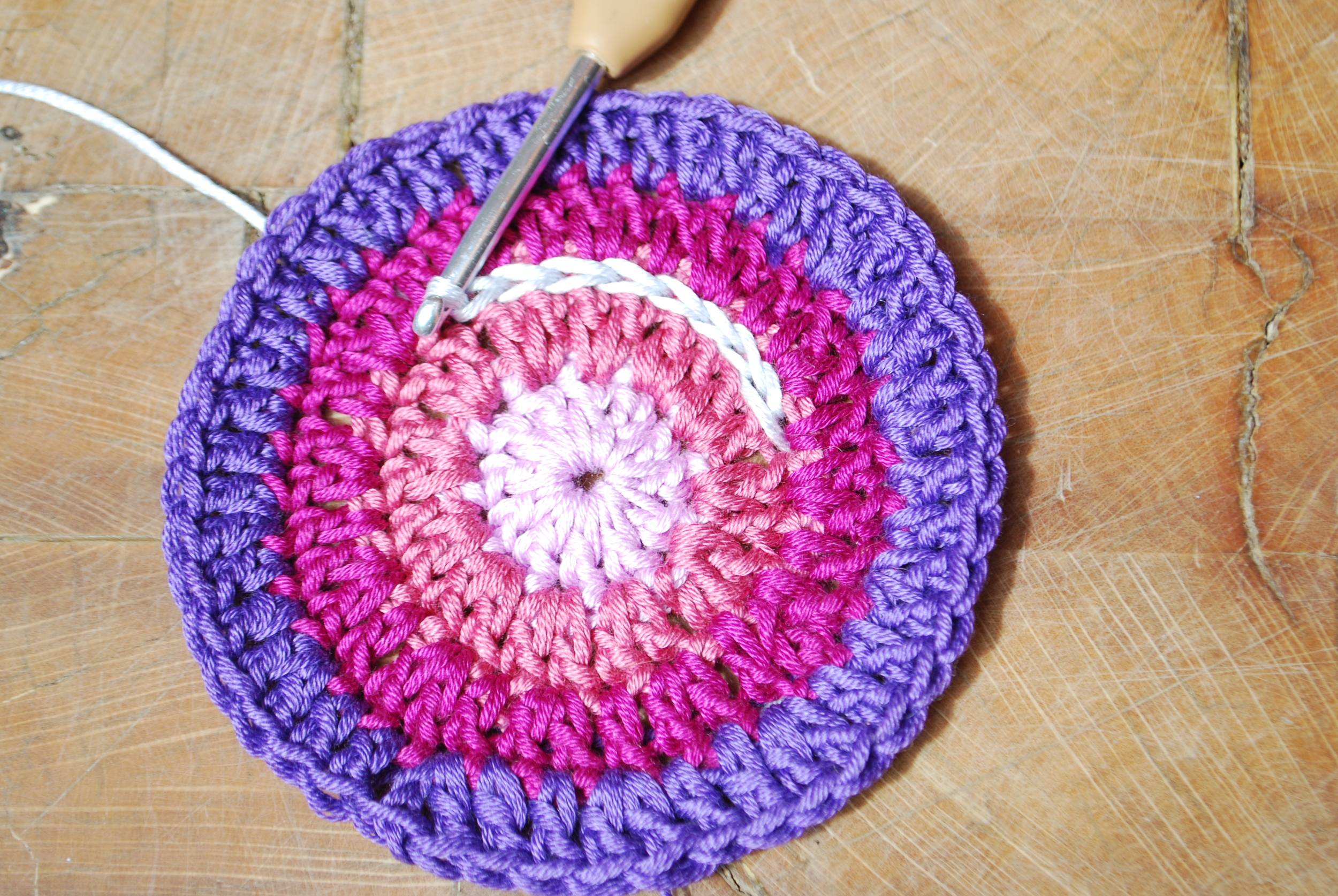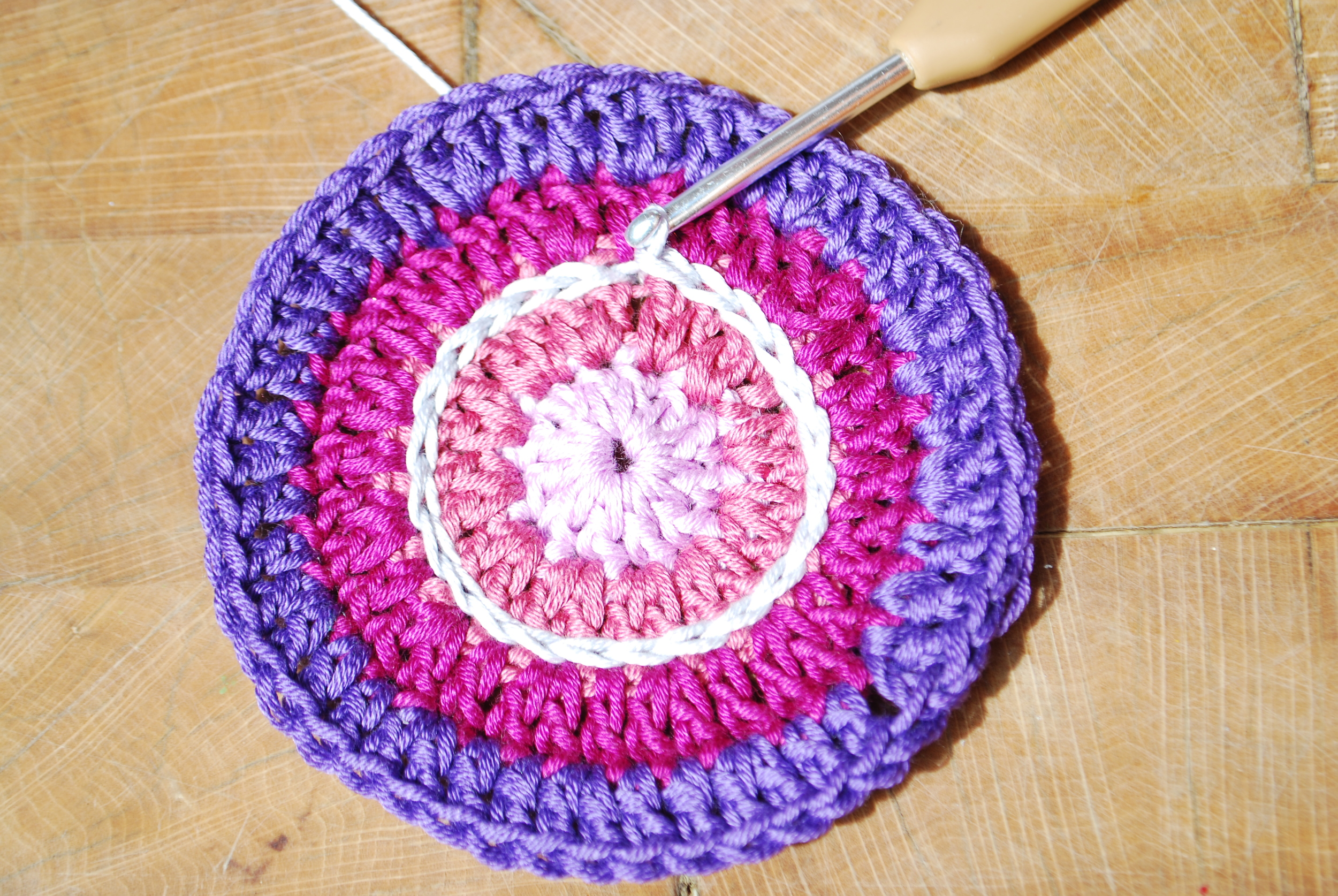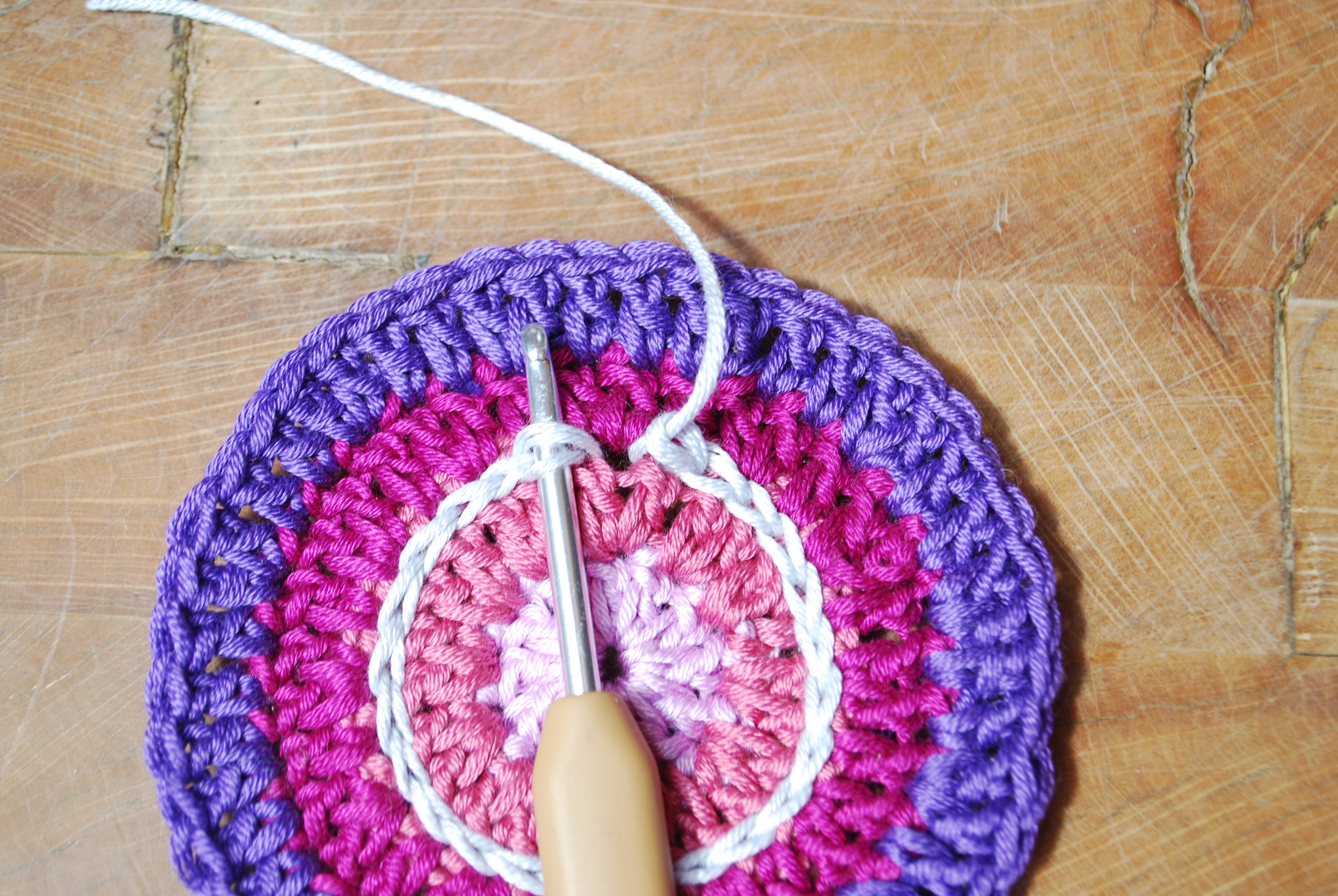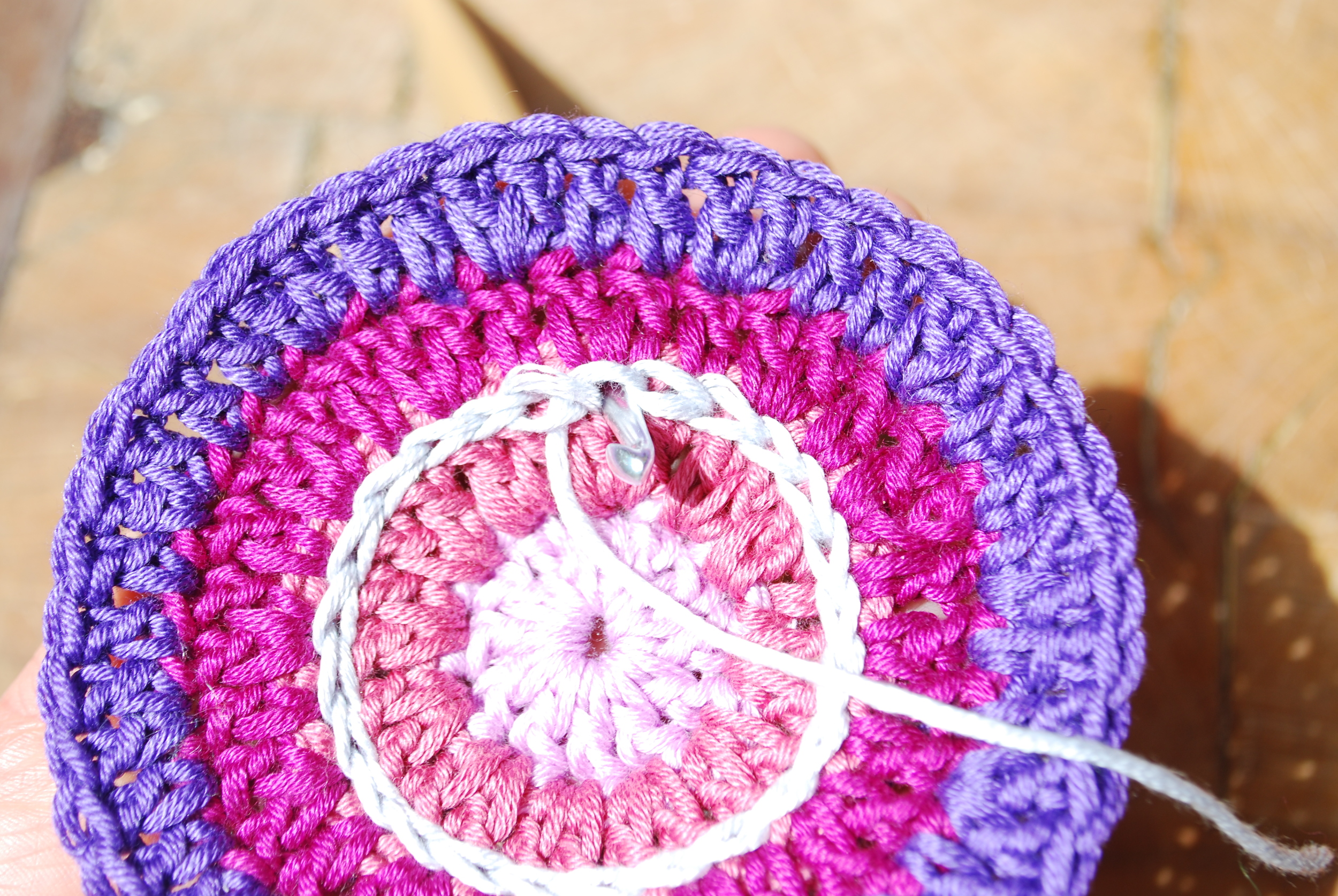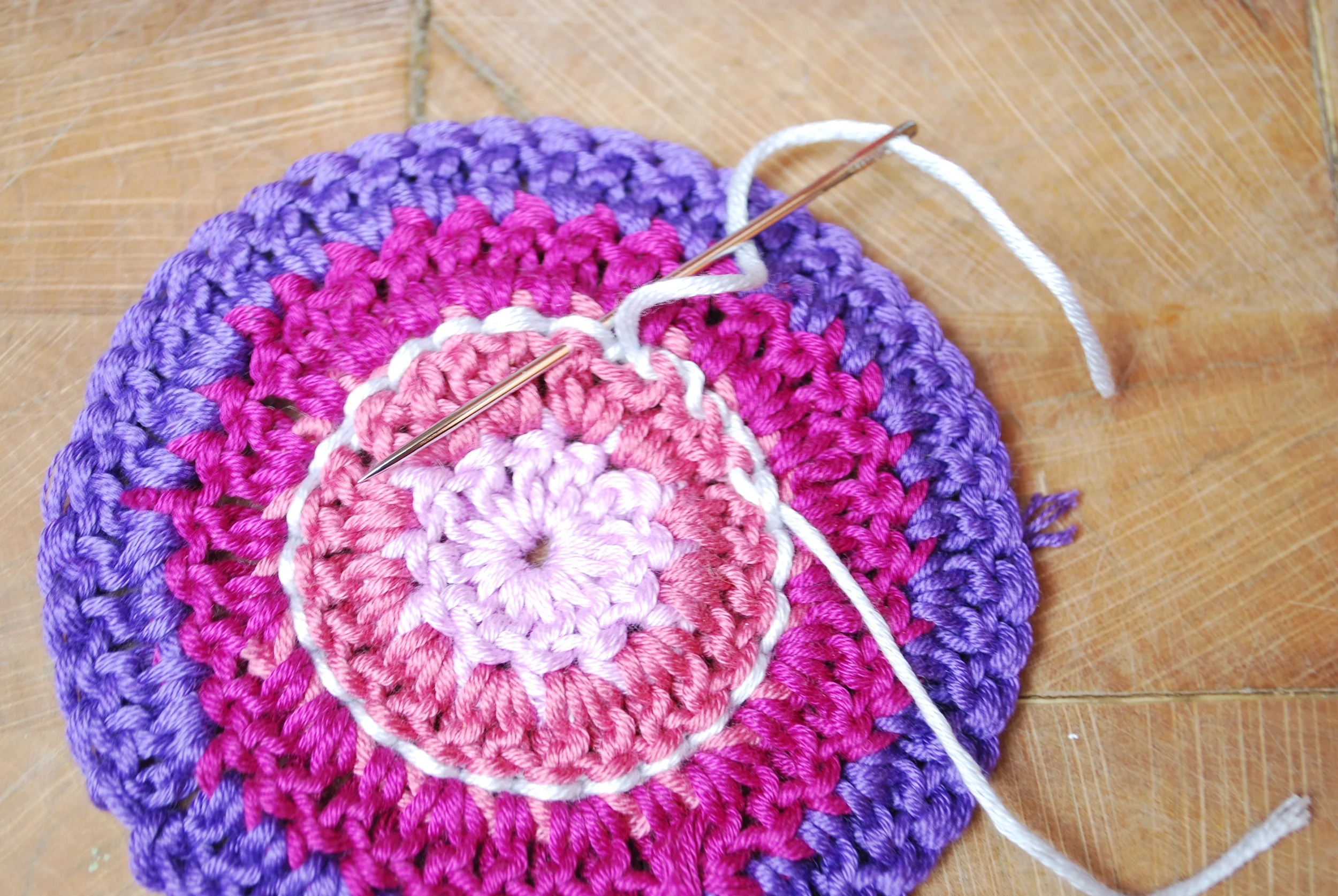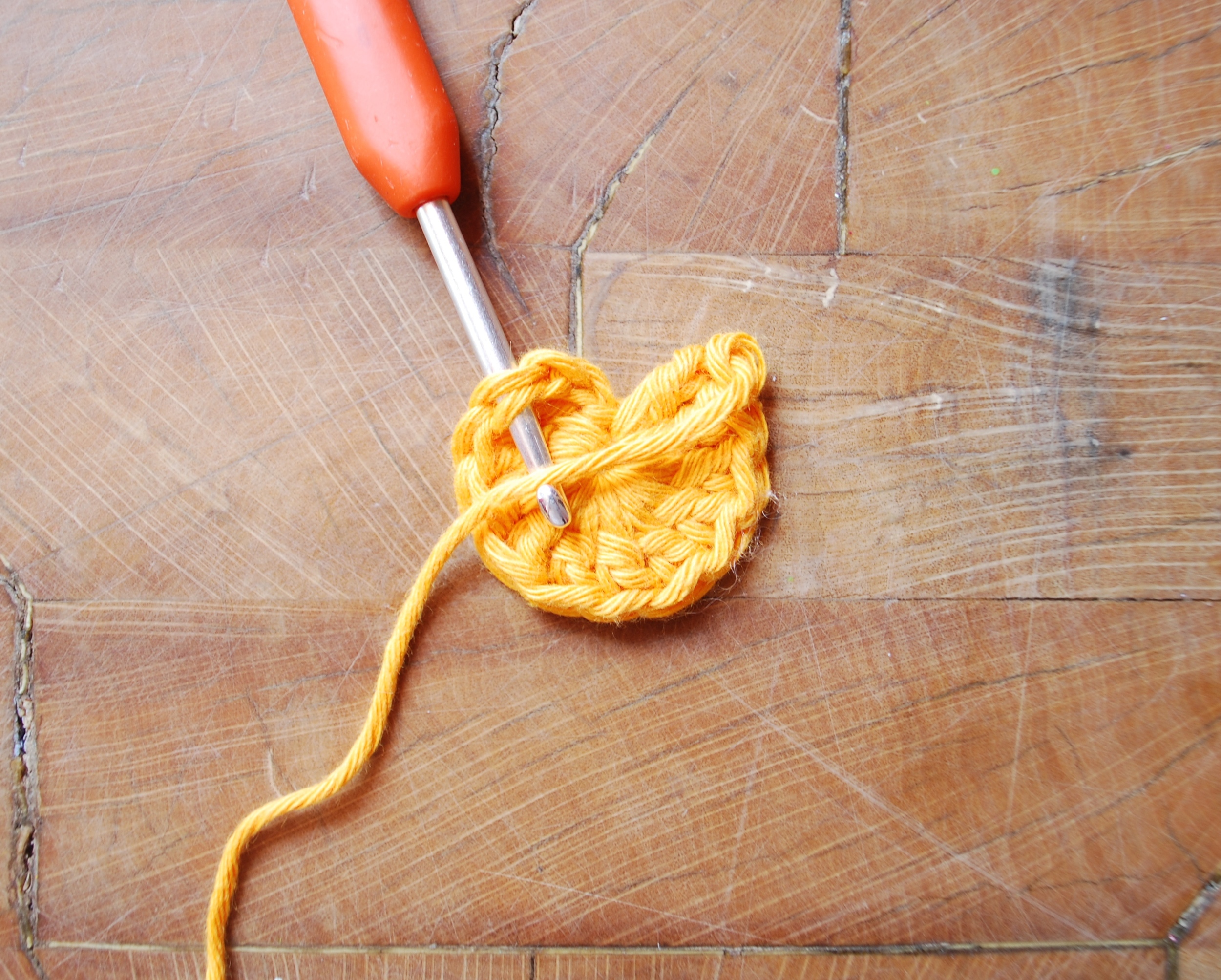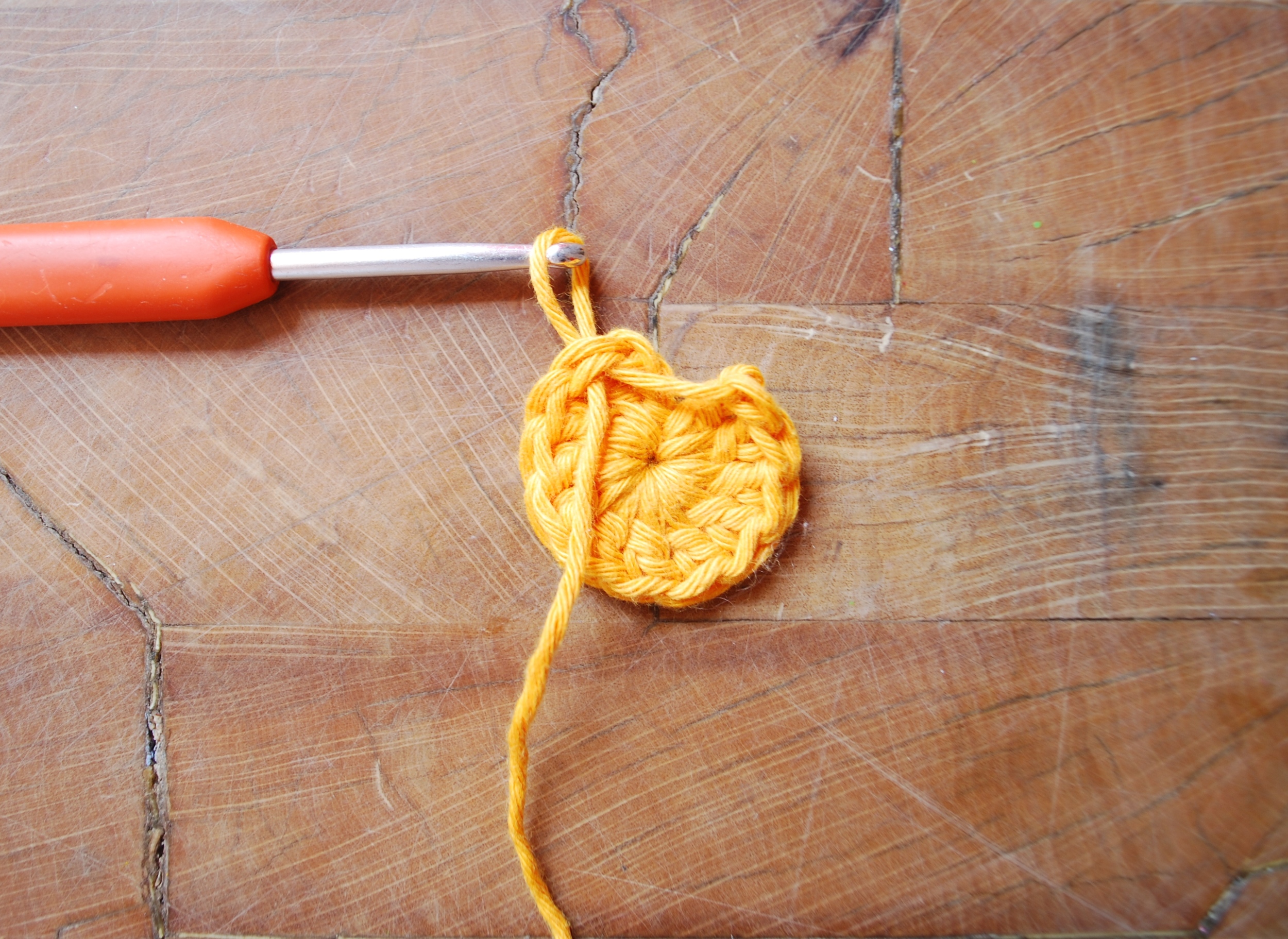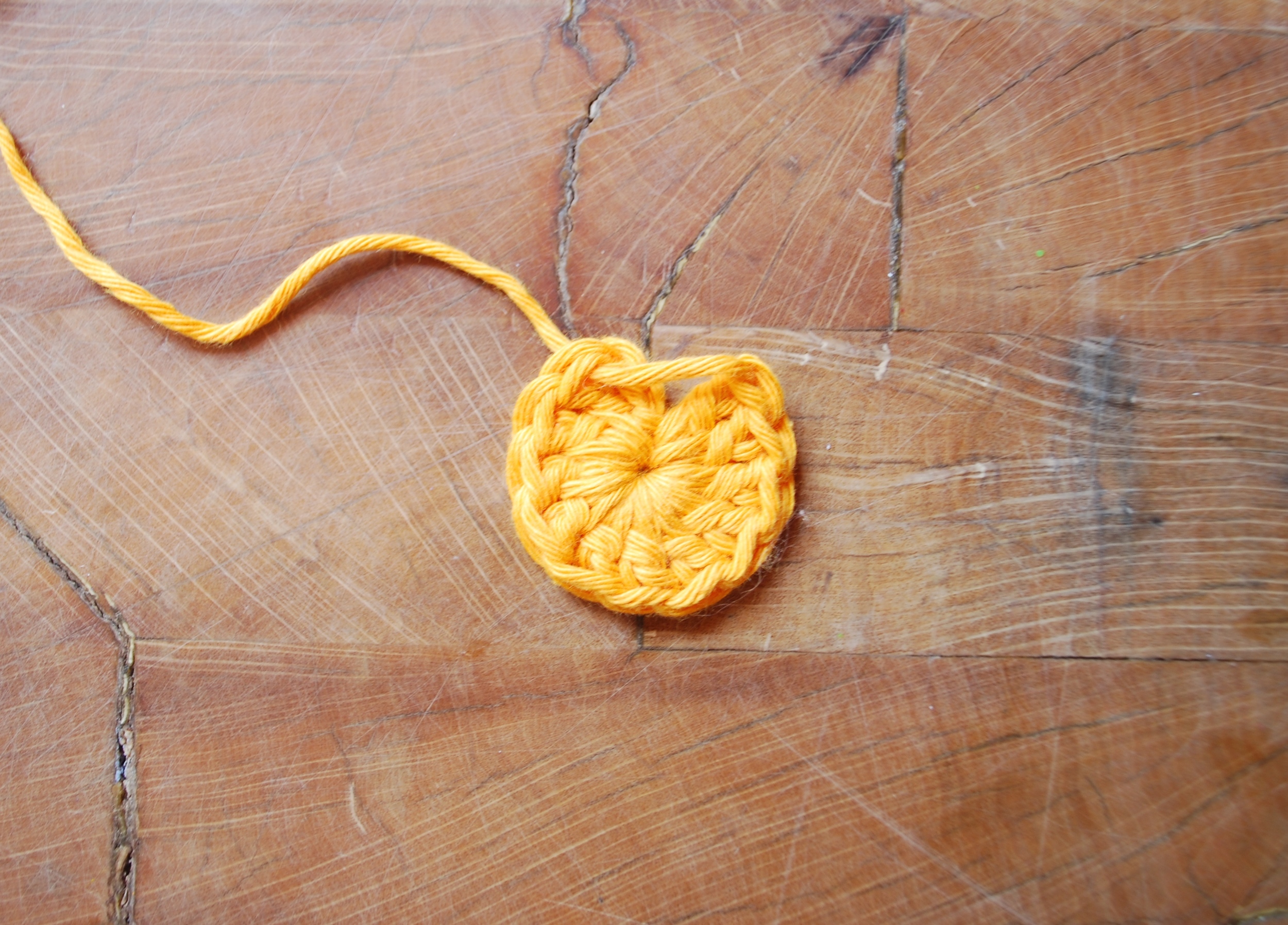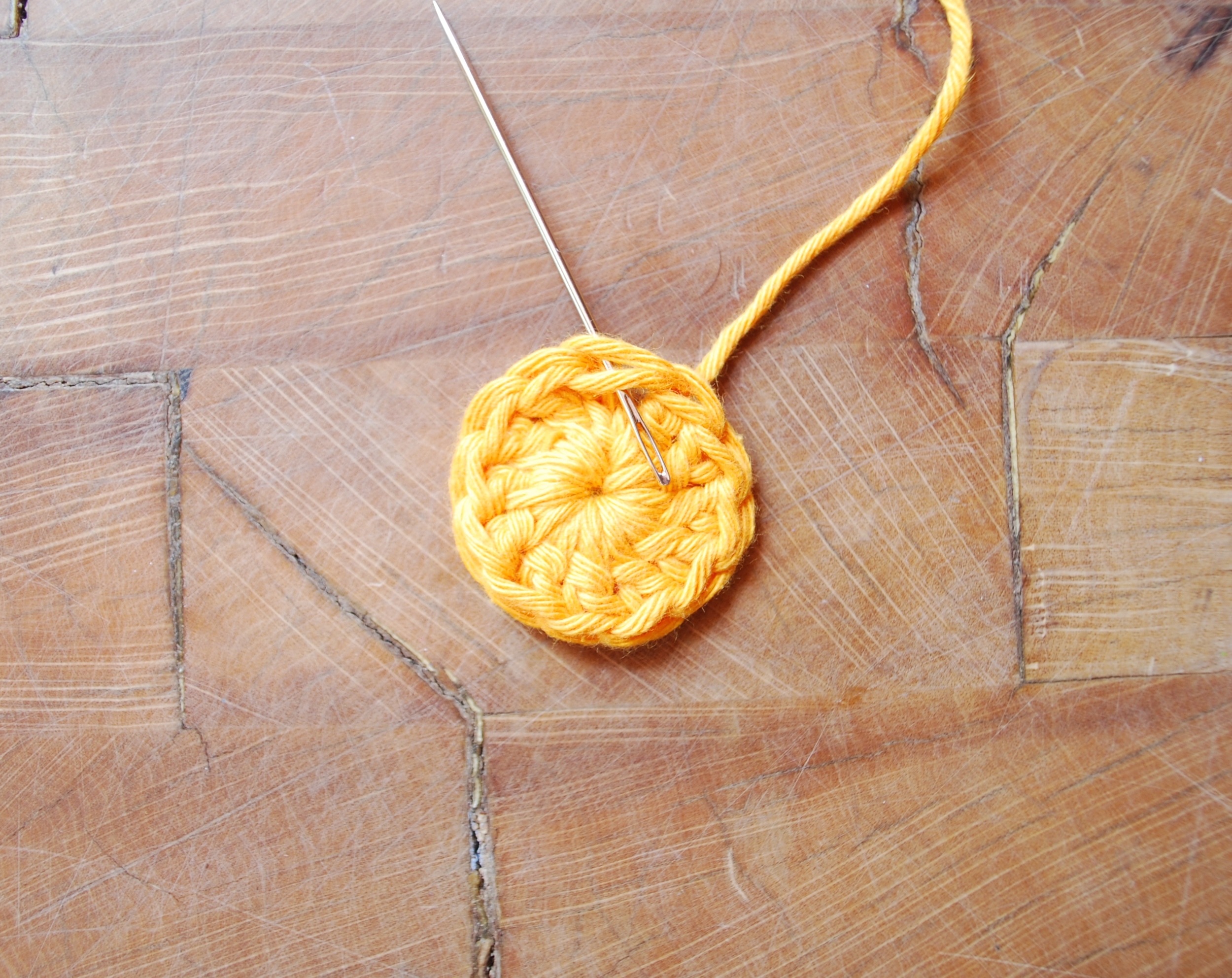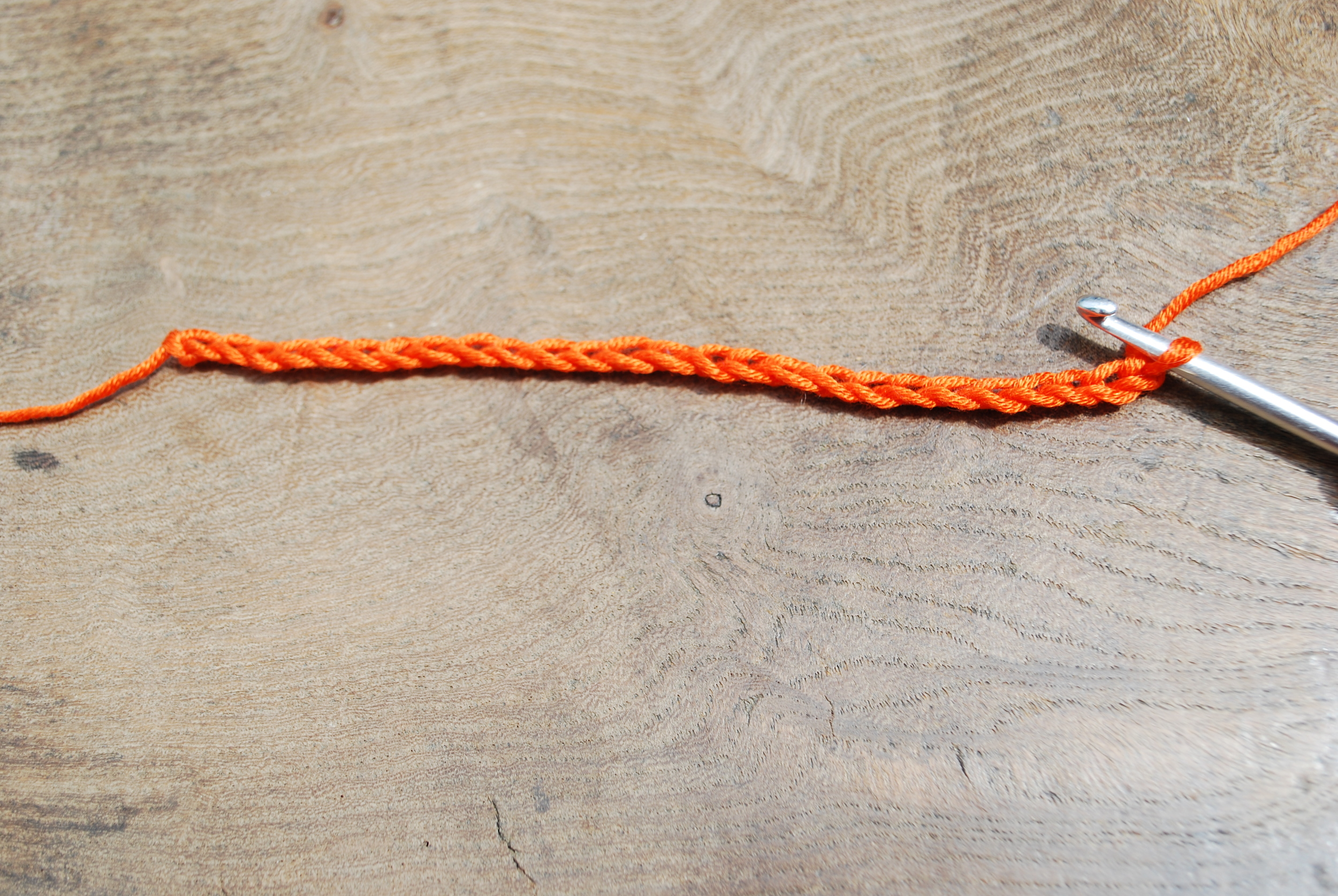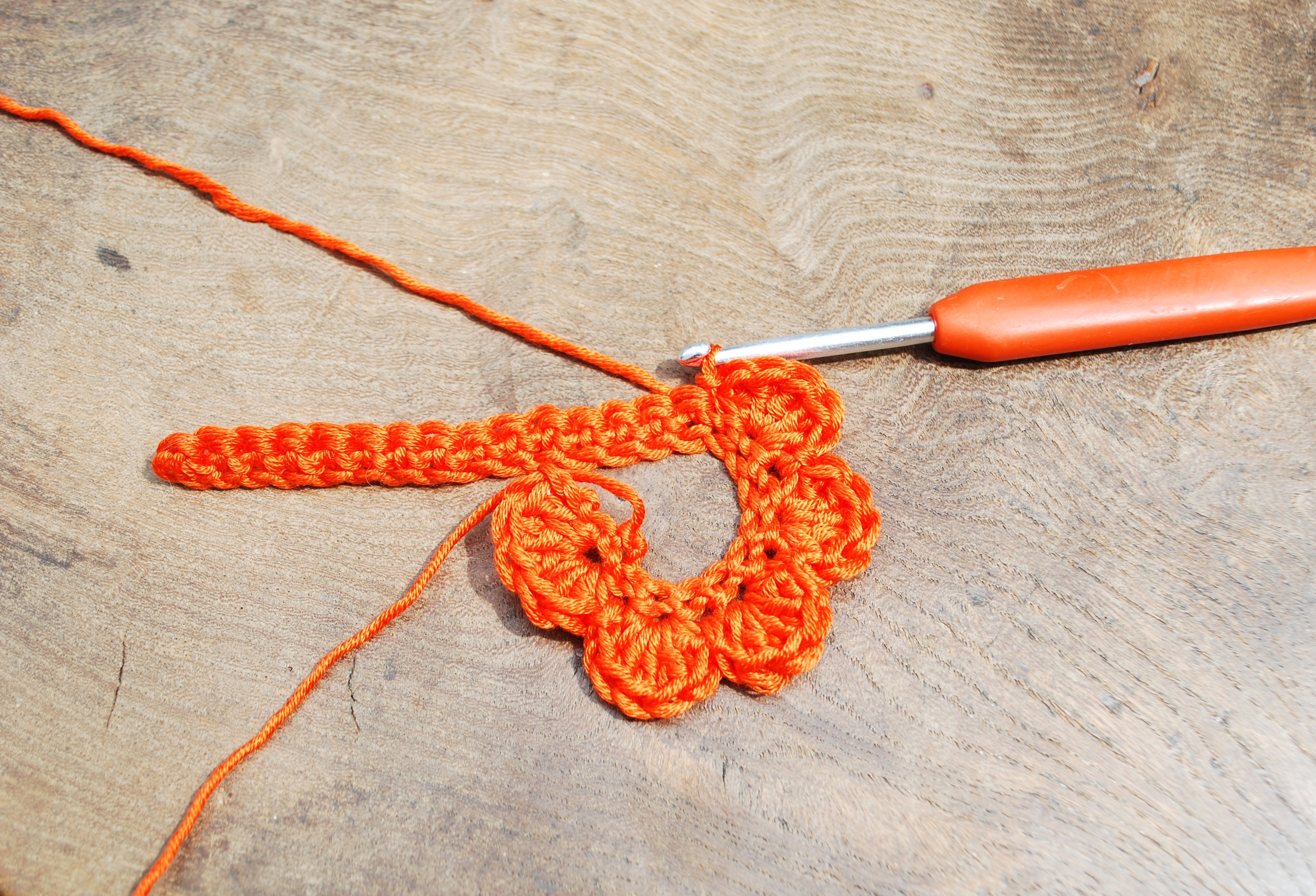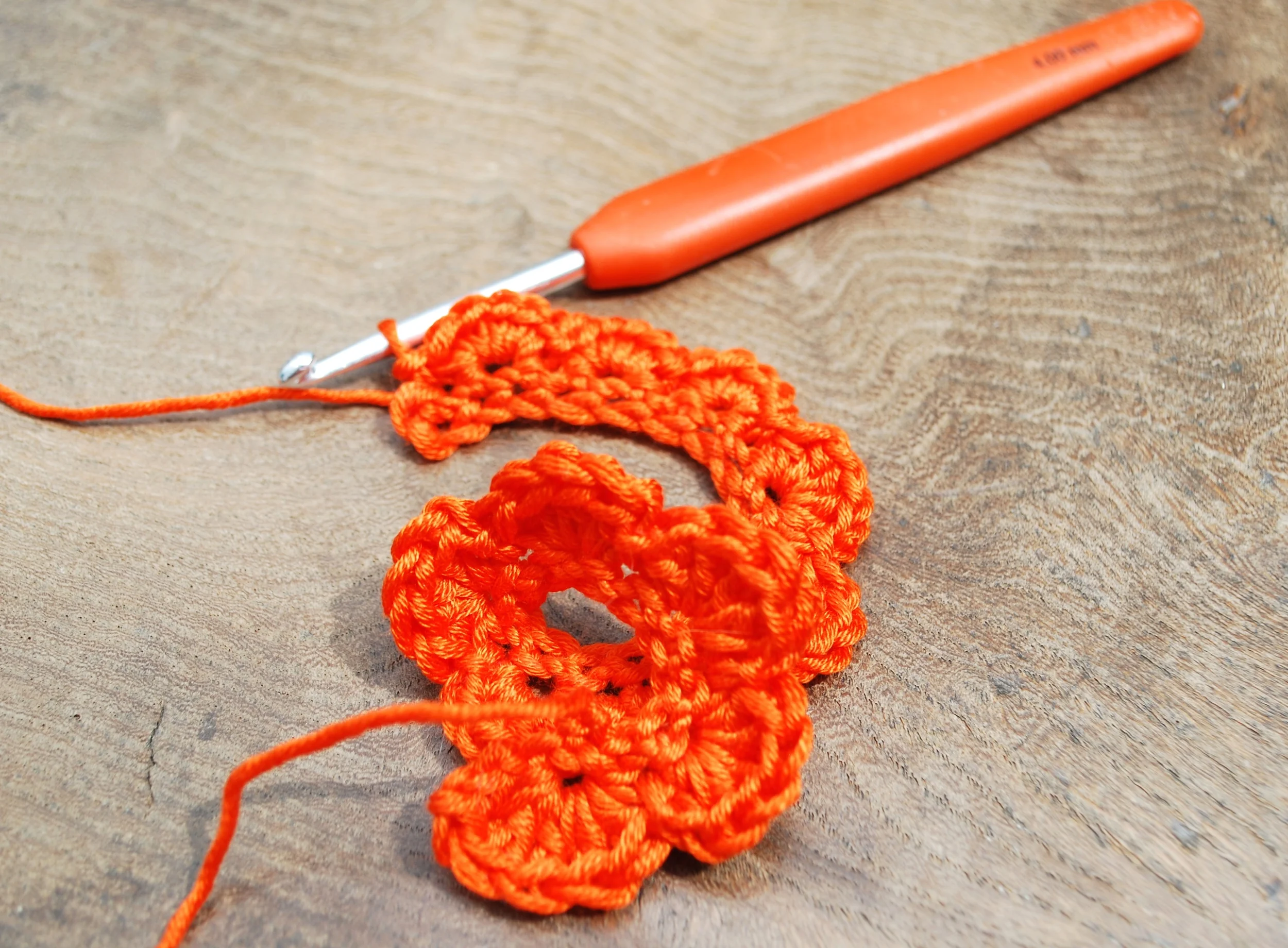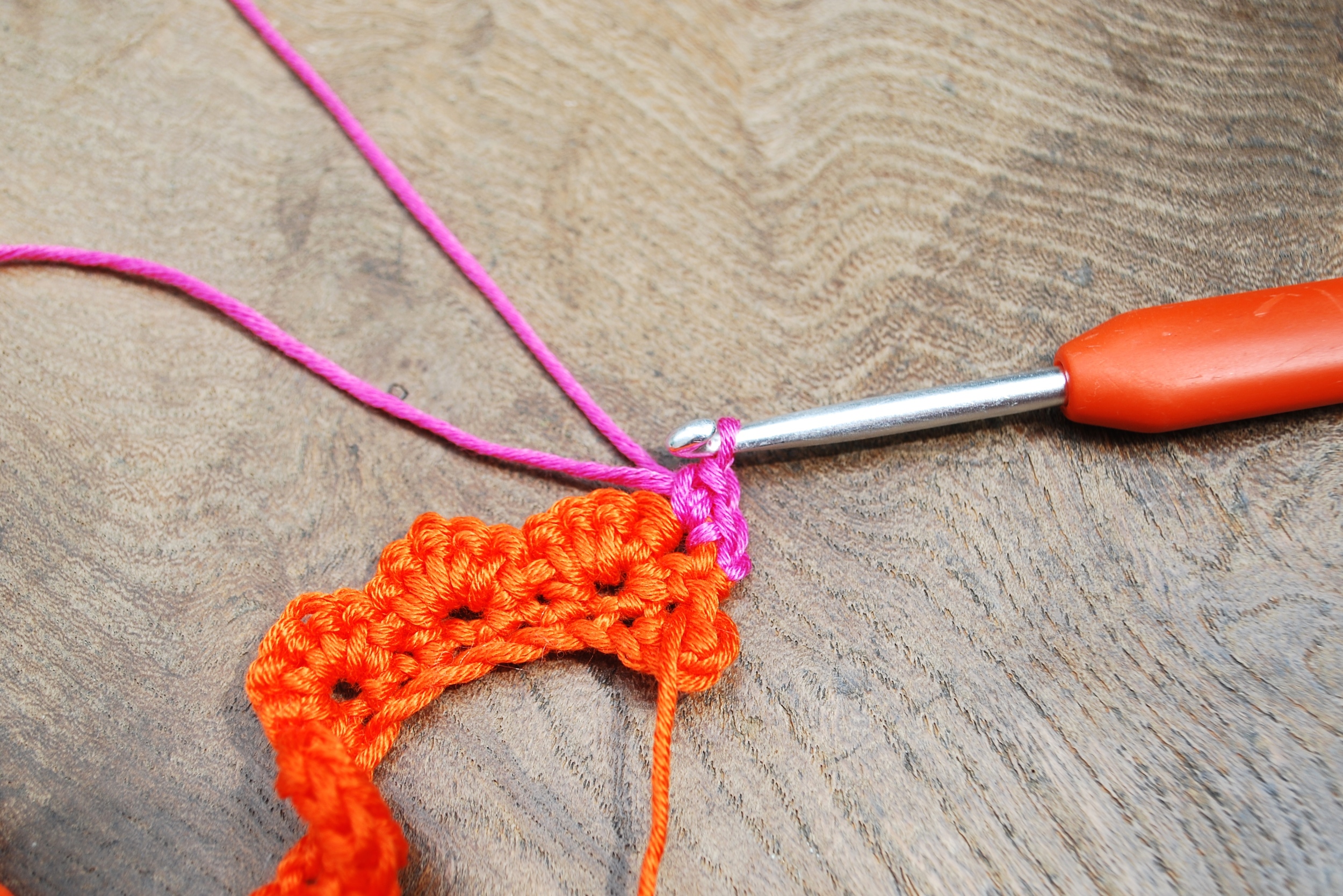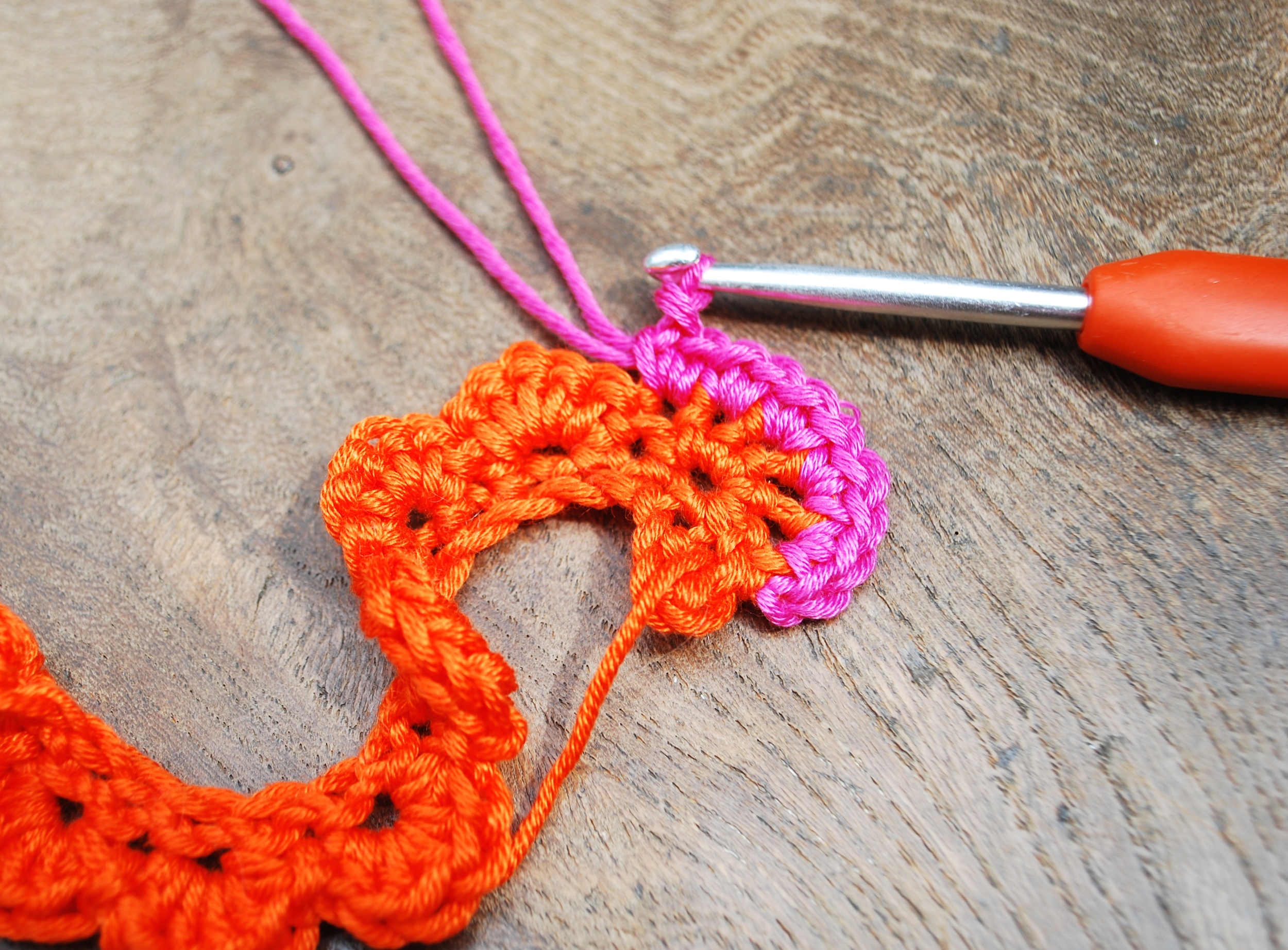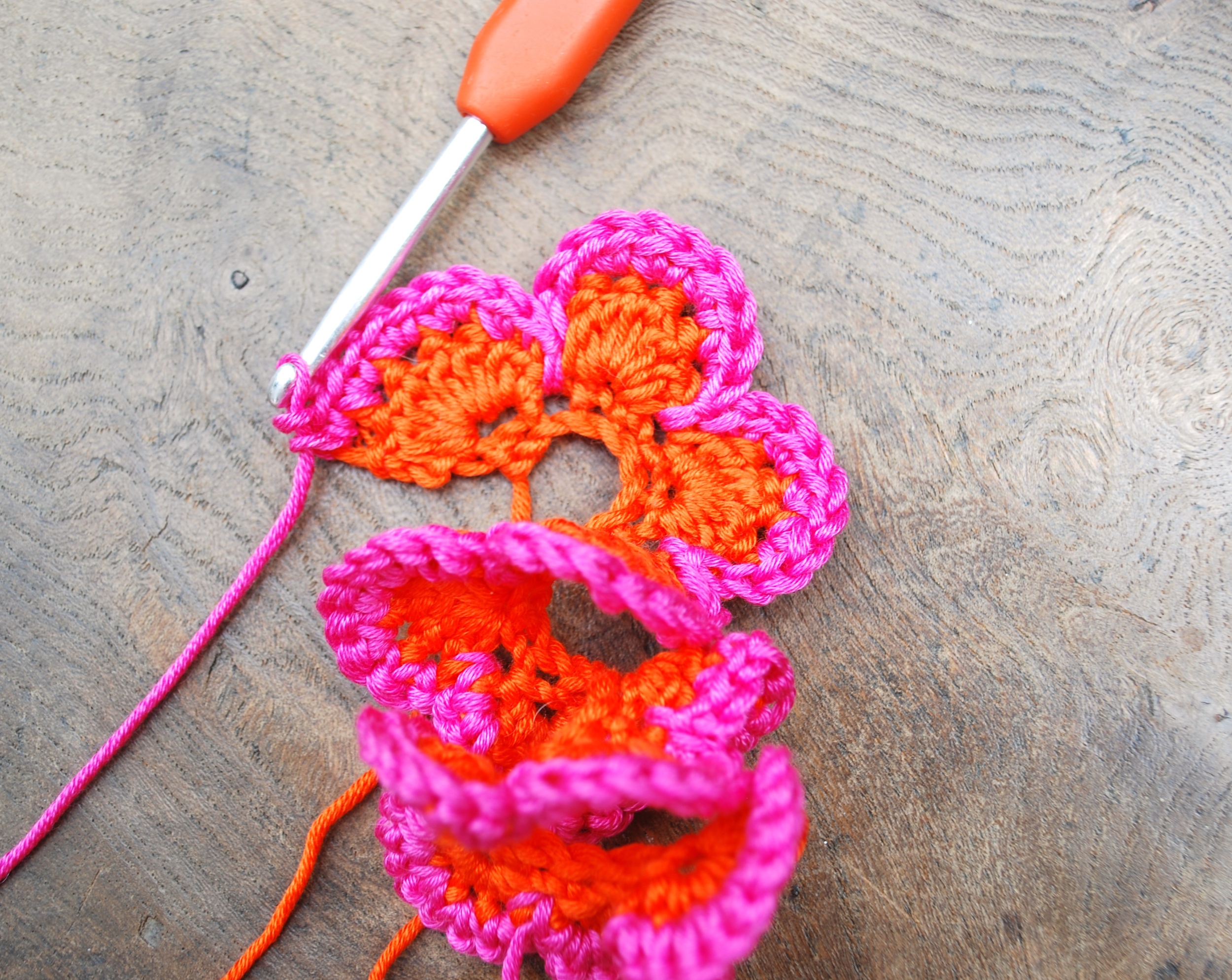Quick and easy to make these cozy crochet gloves make the perfect christmas gift!
Read MoreCrochet Beads and Baubles
A quick and easy make for all crochet lovers these little crochet beads can be used in all sorts of crochet projects.
Read MoreTen tips for a successful yarn bomb.
Whether it be to highlight a cause, create a buzz or simply to brighten up an urban area, yarn bombing can be the perfect means to attract attention. When done with care and consideration it's guaranteed to raise a smile and prompt a selfie!
As with traditional graffiti this yarn art is accessible to all, making the audience wide and varied.
It reclaims and personalises sterile public spaces drawing our attention to everyday street furniture that usually goes un noticed.
Yarn bombing can also be a means of delivering a peaceful protest with a growing number of people actively taking part in challenging the establishment and creating positive change. The Knitting Nannas (what a great name!) epitomise this movement of non violent political activism that yarn was made for.
Our familiarity with the tactile, non threatening qualities of yarn invites us to become active participants with the installation as we step towards it to take a closer look.
I've had the immense good fortune of being asked to create many 'yarn installations' which has led a growing number of people to ask me how they can go about creating one of their own. Here are some of the key points I have learnt along the way, from one enthusiast to another!
1: Planning
Where is it going?
Tree, statue, park bench, phone box, fencing, railings the possibilities are endless but you do need to consider access and the logistics of placing your work once completed.
How will it be fixed in position?
Sewing the yarn 'Scarf' around the lamp post makes it neat and secure. Fix a cable tie around the top to top it slipping down
When fixing to lamp posts I recommend the use of cable ties at the top to prevent your work from falling down. Cables ties are also your first line of defence in keeping your yarn bomb safe from being pulled off. Trim the ends to keep the aesthetics ....done well and you hardly know they are there.
2. Permission
My advice is get permission. Yarn bombing takes time and planning and without permission it can all be for nothing.
I've always worked with permission from the relevant authorities who have actively supported and helped with the installation. They also carry the relevant health and safety, public liability cover that we tend to need these days. It's easy (and relatively inexpensive) to get public liability insurance.
My tip is it's well worth having as it's nearly always required before being given permission to install your yarn bomb.
In certain areas it is still considered to be graffiti and therefor illegal and the artist could face punishment for littering or vandalism.
Keep in everyones good books by being considerate when choosing a place for the installation.
Do not obstruct signage, especially parking and traffic signs. Think safety.
Of course you don't have to get permission you could just risk it but it's very likely that your work will be removed almost as soon as it goes up.
Be respectful.
When discreetly placing small items in public spaces without permission always be respectful. Not everyone will appreciate it so be prepared for any response and offer to remove it.
3. Designing
Is there a theme?
Yarn bombs are usually there to spread the word, provoke thought or raise a smile and it can help to have a theme.
A colour, a logo or perhaps a simple idea like roses wrapped around colonnades!
My latest yarn bomb was for Bath in Fashion 2016 and is based upon the events guest speaker, Dame Zandra Rhodes and her spring summer collection for 2016.
Raise money for charity
Creating a yarn-bomb is an ideal way of raising money for charity. Never underestimate the power of crochet (and knitting!) to generate awareness and money for a good cause. When I was diagnosed with breast cancer earlier this year I felt driven to create value from the situation. Through the use of social media and with the help of Bath in Fashion I was able to create this pink ribbon and decorate it with lots of pretty flowers donated by many wonderful people from all across the UK. The ribbon is now on display at the Bath RUH for patients. relatives and staff to enjoy and this grand floral display on Milsom Street raised over £2000 for the Bath RUH cancer care centre.
Measure it.
Once you have established what is being yarn bombed it's a good idea to measure it. As a rule you need to make things slightly smaller that the object you are covering to ensure a snug fit. As an example if the post you are covering measures 24cm in diameter then knit or crochet to measure 21cm. You can then pull the scarf nice and tight for a snug fit. This helps prevent it from slipping down.
Trees obviously vary in width so you need to take the time to measure the widest and narrowest parts of the trunk and branch and plan accordingly.
Do a fitting
I have been known to visit sites or statues countless times to measure and re measure and on occasion have even done a fitting before the day just to be sure!
Large or small?
It can be helpful to familiarise yourself with the basics by starting small. Think about covering a piece of home furniture yarn bomb style as it's a great way to explore the possibilities of this wonderful art without the pressure of it going public. Also it looks great in your home and becomes the talking point with guests!
Modular or Complete
Is the yarn bomb one complete piece or will it be made up of many smaller elements?
Modular pieces like granny squares makes it easier for lots of people to take part as each person can make one piece to add to the stash. This is partly why we love crochet right? Small creations to make one large piece.
The advantage of modular parts is that it leaves you with the option to make easy last minute alterations on the day. The lions coat is made up of individual parts making it simpler to fit. Some of the lamp post covers we had turned out to be much longer than was needed and it was great to be able to unpick the join between two sections to shorten it to fit.
When making one complete piece you must ensure you have measured correctly allowing for the stretch in the yarn once completed. Lamp post covers can be one long scarf with embellishments added prior to being installed.
4. Materials
Acrylic all the way! That's my advice. It's cheap, colourful and lightweight with a large variety of acrylic novelty yarns too.
Yarn installations look fantastic in the sunshine but can become tragic in the rain. Keep it simple and go for acrylic.
Avoid wool as it gets very heavy when wet and will sag horribly. The same applies to cotton and both take an age to dry.
5. Making
Be it in a large group or on your own allow plenty of time. Imagine how much time you think it will take and then double it!
Putting the finishing touches to a piece and preparing it for installation can take longer than you imagine so it's a good idea to plan for this.
When we did the Roses yarn bomb the roses were sewn onto crochet lengths of about two meters and, oh my goodness, the tangled mess when we threw them all in together in a big box! It took hours to untangle and made the installation day more stressful than it needed to be. Lesson learnt!
My friend and fellow yarn bomber Rosie and I meet up regularly when collaborating on a project. We share ideas and find solutions to anticipated installation problems and this planning really does pay off.
Going Solo
Doing a yarn bomb on your own is perfectly possible - I've done it and it takes a lot of commitment to make something special. Start small with the option to go big later on. See my tips on installation.
Group activity
A group of people with a collective purpose working together is a mighty and wonderful thing and it is the heart and soul of yarn bombing.
It can involve entire communities resulting in lifelong friendships. The group I work with came about as a result of the first Yarn bomb I did for Bath In Fashion in 2014. We ran an article in the local press calling for any keen knitters and crocheters wanting to be involved in the project and 3 years later we are an army of 40.
Crochet Poppies on display in Bath's Guildhall
The benefit to our lives has been immeasurable and we meet once a month every month throughout the year. When we are not making for a big installation we make poppies for Remembrance Day, blankets for refugees and scarves for the homeless.
If your project is BIG then tap into your local knitting and crochet groups. I guarantee there will be one in your area. I know of at least 4 in Bath, all meeting on different days in various cafes. Seek out their whereabouts and get them involved. Start with your local wool shop they are the font of all woolly knowledge!
6. Social Media
Engaging people on social media can be incredibly rewarding. The making community is wonderfully generous both of their time and yarn. My postman always knows when I am working on a yarn bomb project by the increase in the number of soft stuffed envelopes being delivered. It makes the post a really enjoyable part of the day!
Look what was achieved thanks in part to the readers of Simply Crochet Magazine!
We asked people to send in small crochet flowers to be used to create a giant pink ribbon to be displayed at the local hospital for patients, relatives and staff to enjoy.
Patterns and tutorials
Working as a group requires organisation and planning. You need to accommodate mixed abilities and exploit (in the nicest possible way) peoples strengths. Plan the design and offer a range of simple patterns for people to work from. I post my patterns up on my website and email the link to the group so that we are all working to the same pattern.
7. Sponsorship and funding
Most yarn bombs are funded by the makers who are happy and willing to raid their stash but it is possible to get a little help from time to time. Often if the project is for a cause especially a charity you may be able to negotiate a discount with your local yarn store but do remember they are a business and need to make a living too.
I was lucky enough this year to get sponsorship from Rico Design Yarns who wanted to support the Bath In Fashion yarn bomb. This meant my home was, at times, snowed under with packs of wool....oh no....how terrible!!!!
8. Installation
This is when all your planning comes into play! I've never installed on my own and I can't imagine that it's much fun but I can thoroughly recommend this as a group activity.
Enlist the help of friends and fellow yarn bombers! I have a friend who can't knit or crochet but absolutely loves helping to instal (Tina in the orange!) It's so much fun to do together.
Toolkit
Each yarn bomber on the day needs a toolkit containing the following:
Yarn
Scissors
Needle
Hook (would we ever leave home without one?!)
Cable ties
Wire - this always comes in handy for twisting and holding things together.
Mine is all in a bag that never leaves my person. It's so easy to put scissors down on the pavement and then spend the next 10 minutes looking for them!
Step ladder!
Stay safe especially when working at height. Get the right help for the job. The local council are very strict about this and the projects I've worked on in Bath have all had the benefit of the help of the relevant authorities.
Do not leave valuables un attended (see tip 9)
Plan for the weather - If there's rain then try to organise having someone to hold an umbrella whilst the other person fixes the yarn bomb in place. This avoids rain running up your sleeve!
Day or night?
I've only ever installed during daylight hours. Party because I have always sought and be given permission but also it's just so much easier to see what you are doing! You are however more exposed to the public and it can become a fascinating spectacle for passers by to watch so this is not for the shy and retiring folk unless you are feeling particularly courageous!
The public....your audience!
The public will stop and ask questions so be prepared........and be polite! Not everyone is a fan and we just need to accept this and respect peoples opinion.
It helps to have relevant leaflets, collection points (if it is aid of a charity) and banners or posters explaining what it is for (if anything) and why you are doing it (perhaps it's a protest or to raise awareness.)
Engage local media to spread the word. Installation day can be a big event with lots going on which in itself creates a bit of buzz.
9. Tagging and photos
Always tag your work. Let people know who made it and why..
A simple tag can be a luggage label that has been laminated to protect it from the rain.
Place the tag at eye level to encourage people to take a look.
Have someone there to take photos of you installing your work and remember to get the group photo at the end when it's all done!
I invariably have my mum (she's the one with the roses in her mouth!) taking photos and I am so grateful! She also guards the valuables on the pavement, holds the step ladder and generally does anything and everything!
Post your photos on social media.
We all want to be inspired and to see what you've been up to.
10. Take it down and let it go.
The hardest lesson for (me at least) is it to let it go. Once your yarn bomb is up and out there anything can and often does happen. It may be removed, stolen, vandalised but it will almost certainly be photographed and shared so whatever happens just let it go. Do not take it personally.....unless it's wonderful feedback in which case lap it up!
And finally.....
Leave no trace.
Please always remember to remove the yarn bomb. Over time it will become bedraggled and weathered, covered in dirt and start to look terribly sad.
Nobody wants to see this so plan when it goes up and when it comes down.
Wear gloves when removing your work. Think dogs cocking their legs....there, enough said!
Bag it, wash it and save it for another day. My loft is heaving under the weight of previous yarn bombs and I am happy to report that nearly every yarn bomb has gone on to be displayed at other events. Street parties, school fetes, birthday parties and festivals. Once your friends and colleagues know you are a yarn bomber your work will be forever out there somewhere!
Happy yarn bombing!
My long suffering daughter Lili as I get her to pose yet again!
In 2020 during the pandemic The Peoples Friend Magazine asked me if it would be possible to yarnbomb a bus in order for it to be driven to various parts of the UK to brighten up the lives of those who remained indoors due to underlying health conditions. My team and I have never been more proud to have created this offering. Special thanks go to Nathalie Beard, Mariane Rowlings, Rosie Wilkes and Fran Brooks without whom it would never have happened.
Crochet for Cancer Care
Help raise money for cancer care by making a flower to be included in this years spectacular yarn bomb for Bath in Fashion 2016
Read MoreColourful Crochet Bunting
Bring a bit of summer sunshine into your life with this gloriously colourful crochet bunting....the antidote to those grey winter skies!
If I had a pound for every time I was asked for this pattern whilst in my hut at the Bath Christmas Market (2015) I would be posting this crochet tutorial from Barbados! As it is I am snugged up in front of the wood burner happy to be fulfilling my promise to post this pattern first thing in 2016!
A big thank you by the way to everyone who came to see me in my hut...it was amazing to see so many lovely faces and I hope to do it all again!
The secret to successful bunting is to use a good quality sturdy cotton. Cotton yarn gives the bunting a solid weight and shape with no sagging. My preferred yarn is Rico's creative Cotton aran that comes in a range of 37 shades giving you an incredible choice of colours to play with. The affordability of this yarn makes it perfect for a project like this as it really depends upon lots of glorious colour! I have put together a pack of 12 of my favourite colours to get you started and is available from my shop here.
(Note to all....I am not paid to say this by the way....I genuinely love Rico Cotton!)
To make this pattern you are going to need at least 4 different colours of yarn but please don't worry if you don't have any cotton as this crochet bunting is the perfect choice for using up all those bits of scrap yarn that we have stashed away. Try mixing it all up and playing with different weight yarn too. I've had some great results when I've not been too rigid about following the correct rules of a pattern. If you would like to make the bunting as I have then you can buy your cotton pack from me here.
For this tutorial (UK crochet terms) I am using Rico Creative Cotton Candy Pink, Light Pistachio, Tangerine and Fuchsia together with a 4mm hook.
Chain 6 and join with a slip stitch into the first chain (as shown) to make a loop.
Chain 3. This counts as your first treble crochet.
Work 14 treble crochet into the centre loop. You now have 15 stitches. Using a slip stitch, join your work into the third chain as shown. Cast off this colour.
Join your new colour (pistachio) and chain 3 (this counts as your first treble crochet.
Work 1 treble crochet into the same stitch and then work 1 treble crochet into the next 4 stitches.
Work your first corner as follows: 2 treble crochet, chain 2 and 2 more treble crochet all into the same stitch.
Work 1 treble crochet into each of the next 4 stitches.
Work your second corner (2 treble crochet, chain 2 and 2 treble crochet all into same stitch) followed by 1 treble crochet into next 4 stitches. This takes you to your 3rd and final corner (which is already half complete!)
Into next stitch work 2 treble crochet and chain 2. Using a slip stitch join into 3rd chain and cast off this colour.
Join your 3rd colour (tangerine) and work a chain 3. This counts as your first treble crochet.
Into the next stitch work 1 treble crochet.
Into next stitch work 1 half treble, into next 3 stitches work 1 double crochet into each stitch, into next stitch work 1 half treble and into next stitch work 1 treble crochet.
Into next stitch work a corner as follows: 2 treble crochet, chain 2 and 2 treble crochet all into same stitch.
Work into each of the following stitches as follows: * 1 treble crochet, 1 half treble, 1 double crochet, 1 double crochet, 1 double crochet, 1 half treble, 1 treble crochet **. This takes you to the 2nd corner (2 treble crochet, chain 2 and 2 treble crochet all into same hole) Repeat from * to **
Into next stitch work 2 treble crochet, chain 2 and join into 3rd chain with a slip stitch. Cast off.
Join your final colour (Fuchsia) and worth chain 2 (this counts as your first halt treble crochet)
Into same hole work 1 half treble crochet.
Work 1 double crochet into each stitch (10 in total) until you reach the next corner. Work 2 half trebles and chain 2
Work 2 more half trebles into same stitch. This completes your first corner.
Repeat as above working *1 double crochet into next 10 stitches **, 2 half trebles chain 2 and 2 half trebles into same hole. Repeat * to **
Complete the 3rd and final corner by working 2 half trebles, chain 2 and joining this with a slip stitch to 2nd chain. Cast off and sew in your tail end.
Now all you need to do is repeat repeat repeat until you have a neat pile of triangles.
Joining it all together
Using any colour chain 5.
Taking your first triangle and starting in a ch 2 corner space work 1 double crochet, continue with 1 dc into each stitch along one side starting and ending with the chain 2 corner space.
ch 2 ( creates a neat space between the next triangle) and repeat with your second triangle. continue until you have a string of bunting triangles to suit the length you require.
Finish with a ch 5 after the last triangle.
Row 2:
Turn and work 1 dc into each stitch (I like to work row 2 in a different colour but it's up to you!)
Cast off and display your bunting!
Now all that is left is to add the all important tassels!
Sculptural Crochet Flowers
Crochet just got BIG!
Read MoreSpiral crochet - the easiest pattern in the crochet world!
If ever there was a crochet pattern to build the beginners confidence and raise a smile then this is it!
This is quite possibly the easiest crochet 'pattern' ever in the world EVER! And for this reason they make the perfect yarn bomb contribution and are the central focus for the next Bath In Fashion 2016 yarn installation.
To make a spiral you will need any yarn and any hook!
Here I am using Rico Basic Acrylic and I am going to start the first spiral with a 4mm hook which will make quite a compact spiral. Further along we will see what a spiral looks like when worked with a 5mm hook in the same yarn. Play and experiment because this is when the magic happens!
Chain 40 (or 50 or 60 or as many as you like to reach desired length)
Into the second chain from hook work 3 double crochet (US=Single crochet)
Like this! Here I've worked the first 3 DC into the 1st chain.
Repeat this all the way along working 3 double crochet into each chain stitch (here I have worked into 2 chain stitches = 6 double crochet)
By about the 4th chain stitch you will see your work begging to curl like this.
As your spiral grows and curls it may begin to twist out of shape but this is normal and all you need to do is turn it to keep it all twisting in the same direction.
When you reach the end of your chain cast off and change to your second yarn colour.
Work 2 double crochet into each stitch from row below.
When you get to the end of the row cast off your yarn and twist your spiral so that it is all going in the same direction.
For that final finishing touch gently pull both ends to stretch it out and open up the spiral.
Now let's see what happens when we do the same thing but this time using a 5mm hook and instead of working double crochet let's us half treble crochet throughout.
Same pattern and yarn but different size hook and stitch.
I think I prefer the one on the right because it's more 'open' but the beauty of this very simple pattern which is based on maths you can experiment and play with all sorts of yarns and hook sizes and get some fabulous results. Have fun!
Surface Crochet
Surface crochet is an easy way to embellish your crochet turning it into a stunning piece of work. The simplest method to begin with is to work slip stitch on the surface of your crochet piece. Once you have had a go yourself you will be able to work it on any crochet (or knitted surface) and it can be used as decoration or to hide any untidy accidents!
Begin by placing your hook from front to back and pulling your yarn through leaving a long enough tail on the reverse for you to sew in the ends once it is complete.
Place your hook into the next stitch hole as indicated here
Pick up your yarn from the back (yarn over) and pull it through. Then pull it through the stitch on the hook (slip stitch)
This is your first surface crochet slip stitch.
Now repeat the process again moving to the next space as indicated, hook in from front to back, yarn over, pull it through to the front and then pull it through the stitch on the hook.
As you continue along you will see your surface crochet begin to take shape.
Once you have reached the end (or the beginning) cut your yarn (leave a tail long enough to thread a needle to sew in the ends)
Now place your hook under both parts of the first stitch you made and yarn over to pull it through.
Like this! Pull it all the way through.
Now bring your hook up through the hole in the last stitch you made from the back to the front and pull your yarn through to the back.
This gives you a perfect 'invisible' join.
Now turn your work and sew in your ends to secure them.
The Invisible Join or 'Needle Join'
I want to show you how to perfect your crochet with this simple and quick technique that gives perfect invisible results every time.
Despite it's name (as coined by serendipity) no needle is required and this is by far the best way of joining your work. Don't be put off by thinking this is complicated as it's really very easy and once you've done it a few times it will become second nature and you will never look back!
All terms are UK crochet so here's a conversion chart from simply crochet magazine that outlines all the stitches for UK and US. Stitches are the same we just call them by different names.
To begin we have made a simple crochet circle by working 2dc (which counts as your first treble) and 11 treble into a magic loop.
Now normally at this point we join our circle with a slip stitch into the top of the chain 2 but not this time!
Cut your yarn and pull it all the way through.
Place your hook through the first stitch from the back to the front
Yarn over and hook it through the stitch so that it is pulled from the front to the back
Like this....
Give it a gentle pull to pull your (half completed) stitch together.
Nearly there, just one last thing to do....
Next we are going to place our hook into the back loop only of the last treble stitch we made.
Like this. From back to front.
Yarn over
Pull the tail end yarn all the way through.
And there you have it. A perfect crochet stitch ready to be worked into for the following round.
All you need is a thousand crochet roses and one reluctant daughter who really doesn't want to have her picture taken !
Crochet Roses
My passion for yarn bombing began in 2014 when I was asked by Bath in Fashion to create a display for their event. From this small beginning a great yarn bomb was born with thousands of crochet roses cascading down the colonnades of Bath city centre. This was made possible by the wonderful army of women that came together to work on the project and from the hundreds of roses that were sent to me from all the country.
Many of the roses were created from this pattern which was inspired by Attic 24 with the additional twist of an extra row to create a rose with 2 colours. It's simple and quick and once you've made one you will want to make a bouquet!
All terms are UK and I am using a 4mm hook with Rico Essentials Cotton for this tutorial as their colours are divine and the stitches show up beautifully.
CH = Chain. Yarn over pull it through stitch on hook
SS = Slip Stich. Hook into stitch, yarn over, pull it through everything.
DC = Double Crochet. Hook into stitch, yarn over, pull it through stitch (2 stitches on hook) yarn over, pull it through both stitches.
HTR = Half treble. Yarn over, hook into stitch, yarn over, pull it back through stitch (3 stitches on hook), yarn over, pull it through all three stitches.
TR = Treble. Yarn over, hook into stitch, yarn over, pull it back through stitch (3 stitches on hook), yarn over and pull it through 2 stitches, yarn over and pull it through both stitches.
Begin by working CH 26
Into the second chain stitch from your hook work 1 DC
Continue all the way along working 1 DC into each stitch = 24 stitches.
CH 3
Turn your work and into the stitch as indicated by the needle work 4 TR
Into the next stitch as indicated by the needle work 1 SS and pull it tight.
This completes your first large petal.
Into the next stitch work 5 TR, slip stitch into the next stitch. (you now have 2 large petals) Repeat this 3 more times to make 5 large petals. Notice how your work is beginning to curl. This is meant to happen!
Into your next stitch work 5 HTR followed by a SS into the next stitch. Repeat this 3 more times and you have made 4 medium petals.
Into the next stitch work 5 DC followed by a SS into the next stitch. Repeat 2 more times and you have made 3 small petals.
Cut your yarn and fasten off. Now join in your new colour with a CH 2
Turn your work and work 2 DC into the next stitch.
Repeat working 2 DC into each of the petal stitches.
You will have worked 2 DC into each of the 5 petal stitches (10 DC in total). Work 1 SS into the same SS from the row below.
Repeat this process all the way along the top of your rose working 2 DC into every petal stitch followed by a SS into the SS from the row below. Cut your yarn leaving a 20 cm tail end and cast of your work.
And now for the 'reveal'! Starting with the smallest petals in the middle carefully wind your rose around the smallest petals ending with the large ones on the outside edge. This can be a bit of a fiddle to begin with but you will soon get the hang of it
Carefully turn your rose over and thread your needle with the long tail end. Sew the back of the rose together making sure it is completely secure. It doesn't need to be neat because you won't see this bit, it's just making sure your rose stays in shape.
And there you have it! Anyone who knows me won't be the least bit surprised that I have chosen a deep orange and hot pink combination as it's my absolute favourite!
Now all you need do is continue making roses to adorn and decorate your home, clothing, bags and furnishings...the world is your oyster! Try experimenting with different types of yarns to see the many ways you can vary this simple pattern to make a bouquet of beautiful roses.



